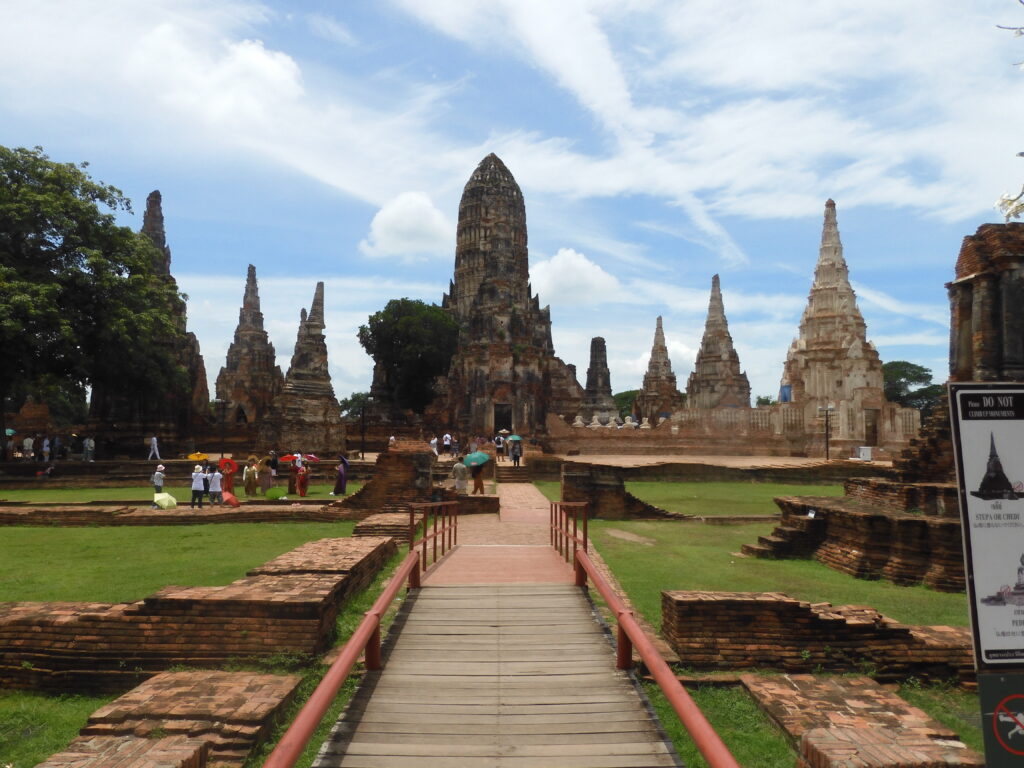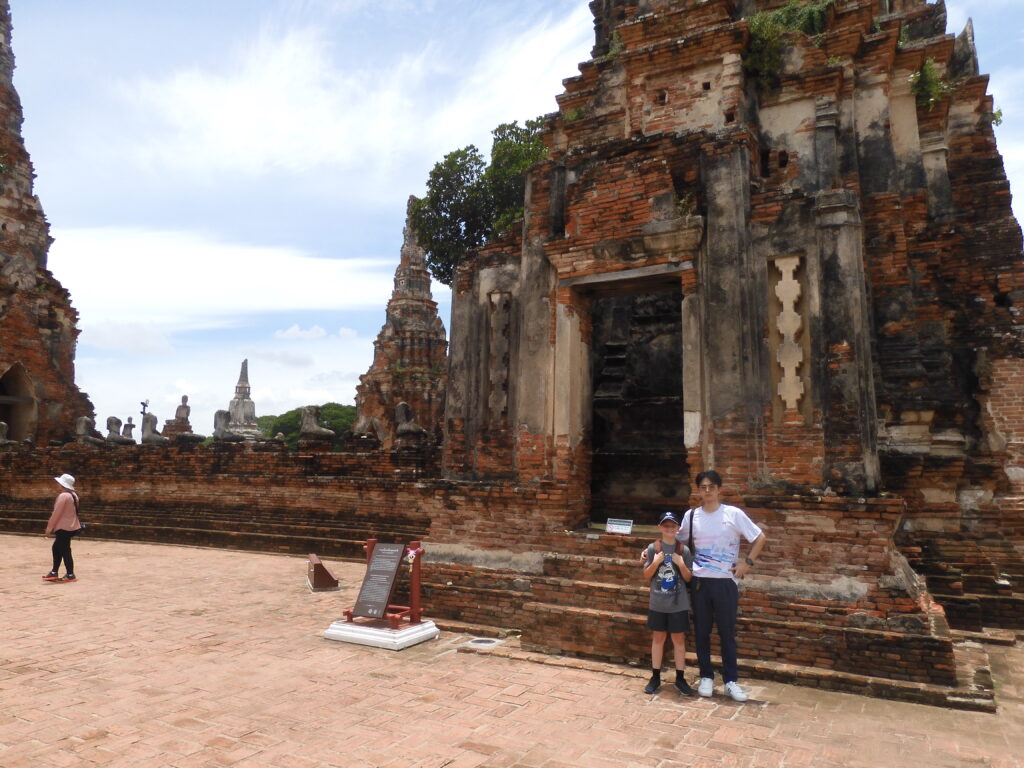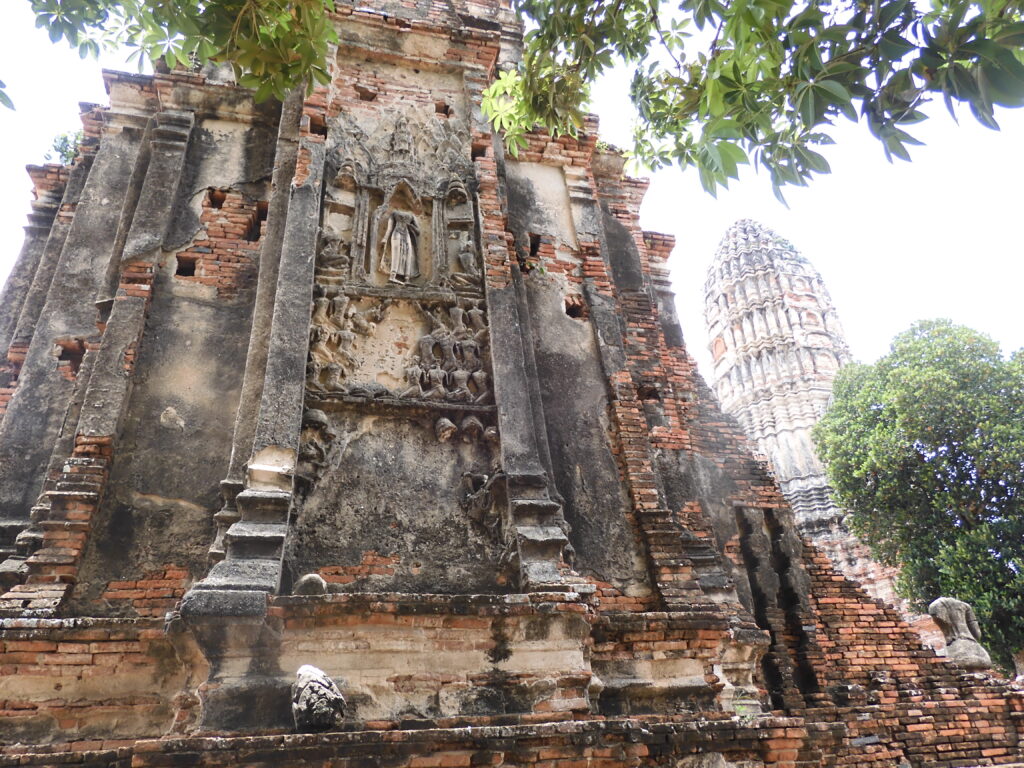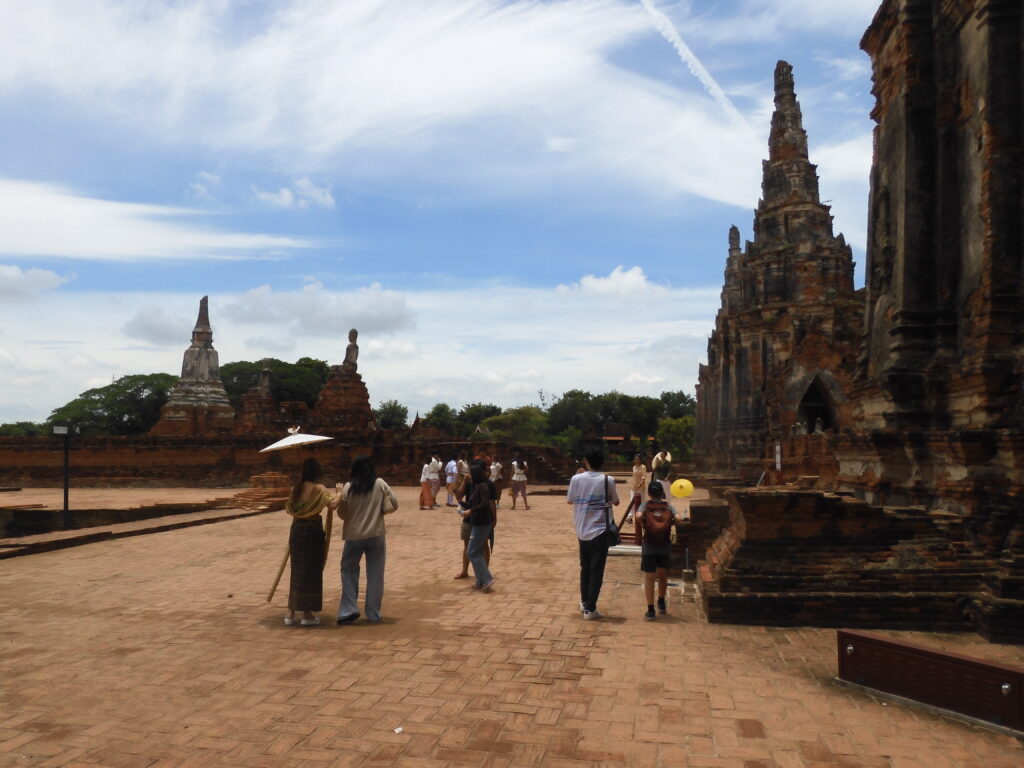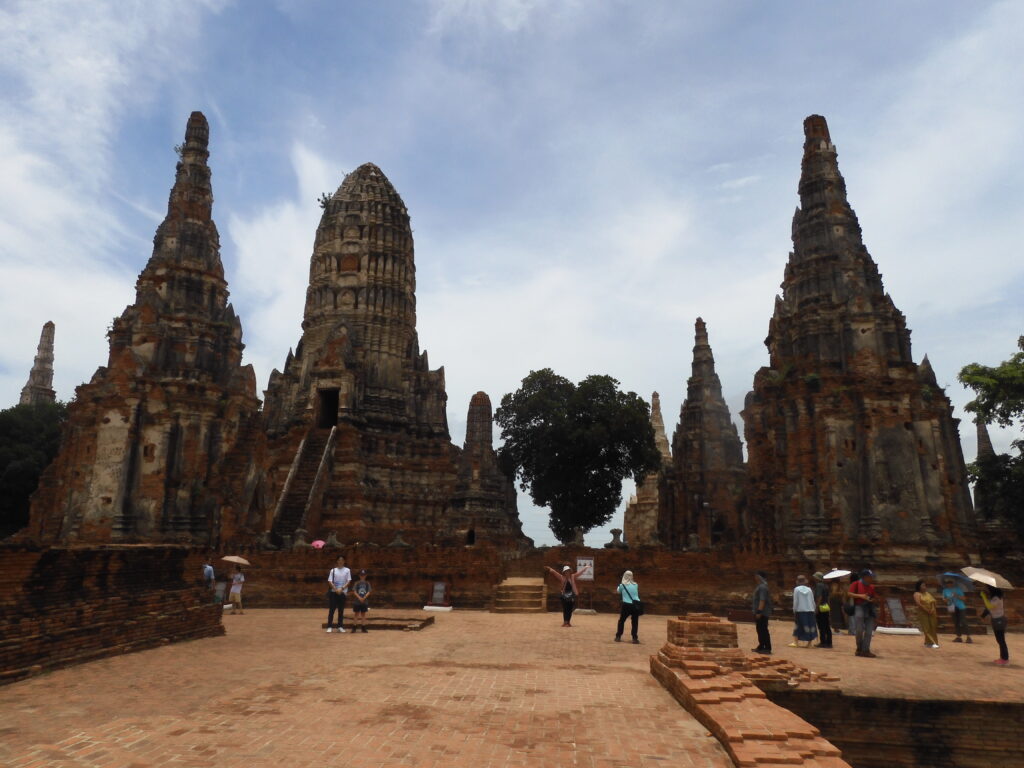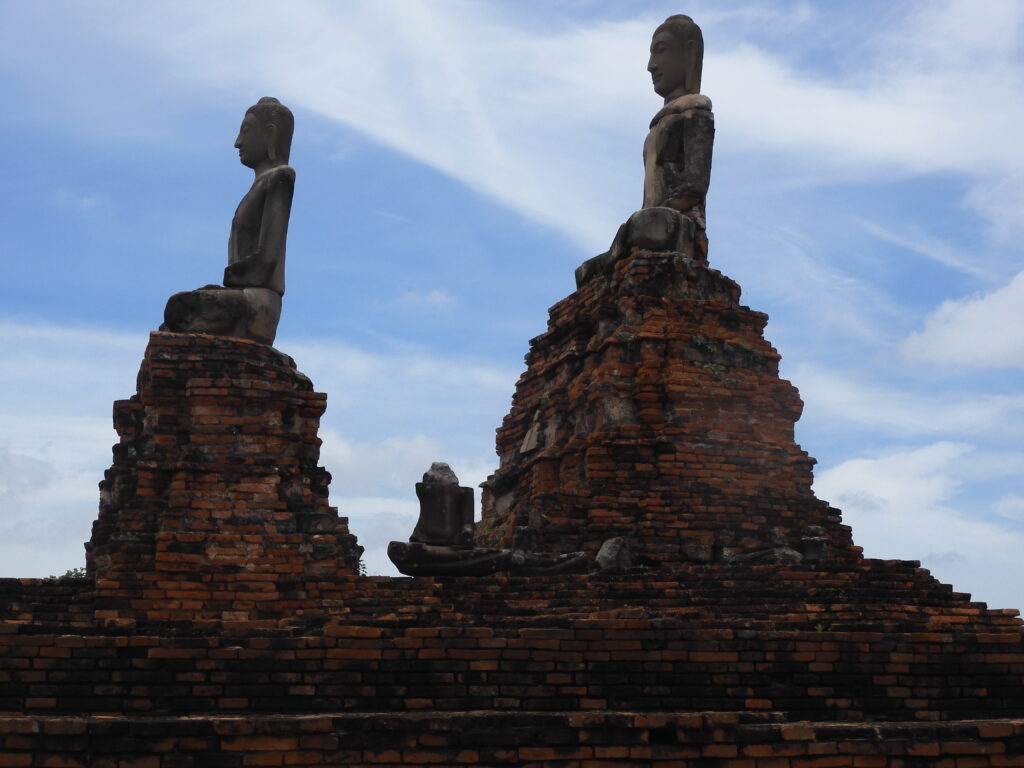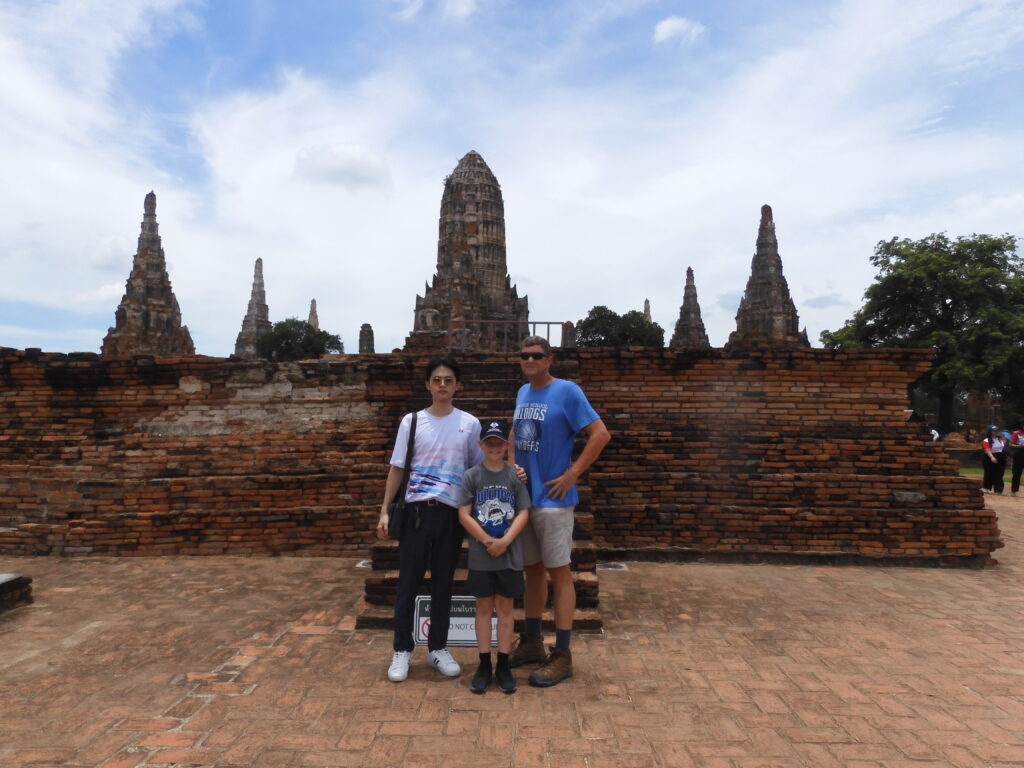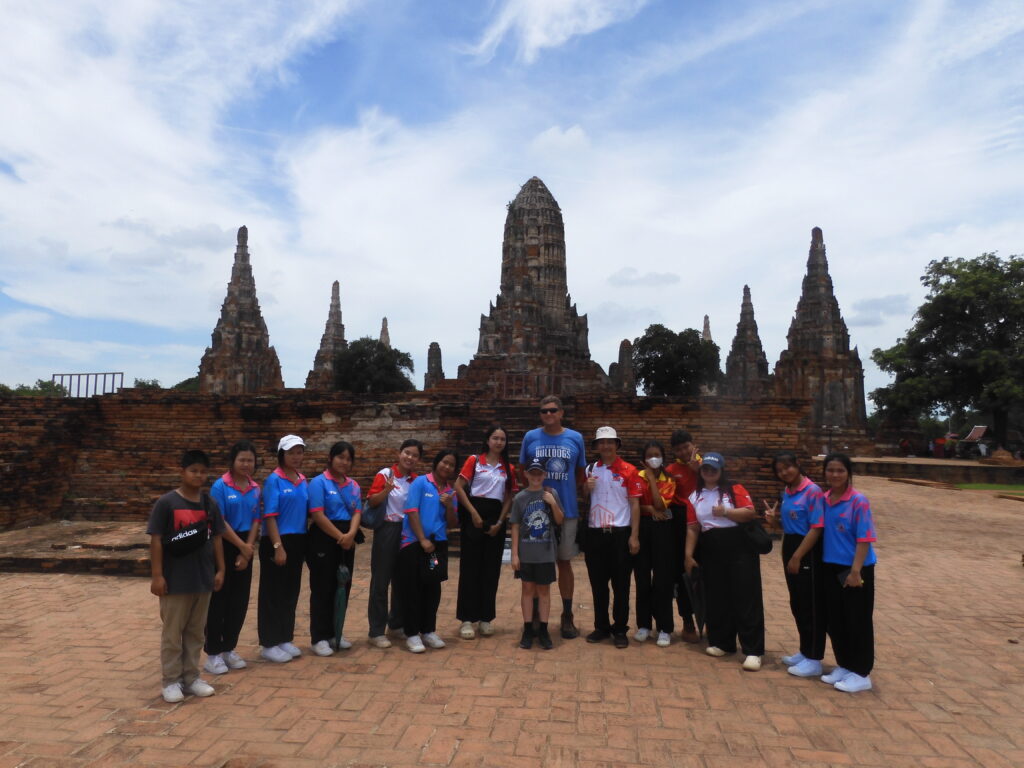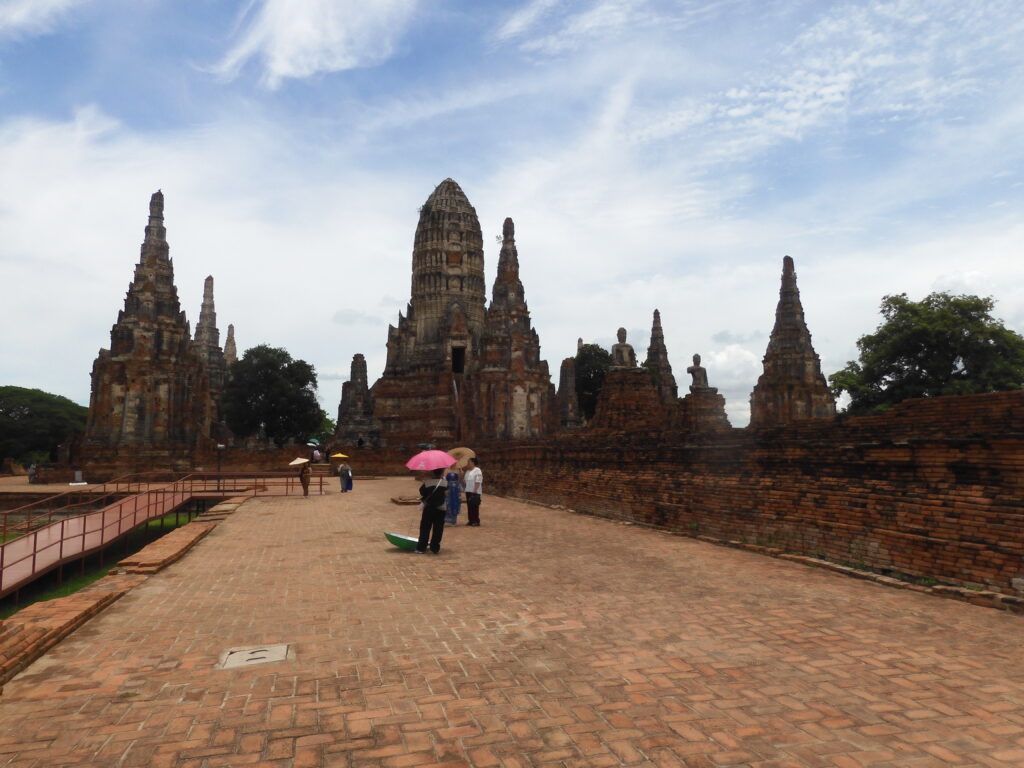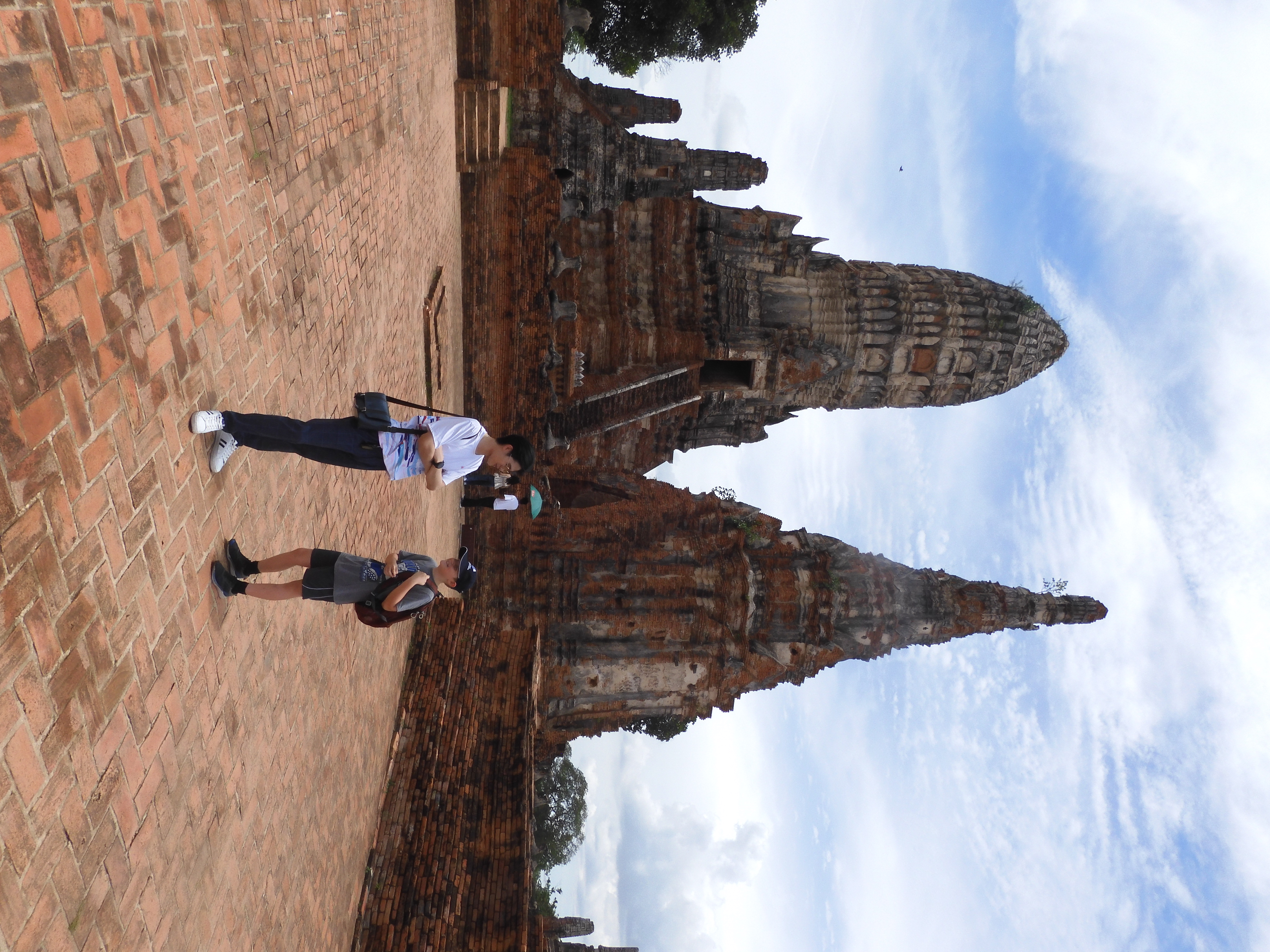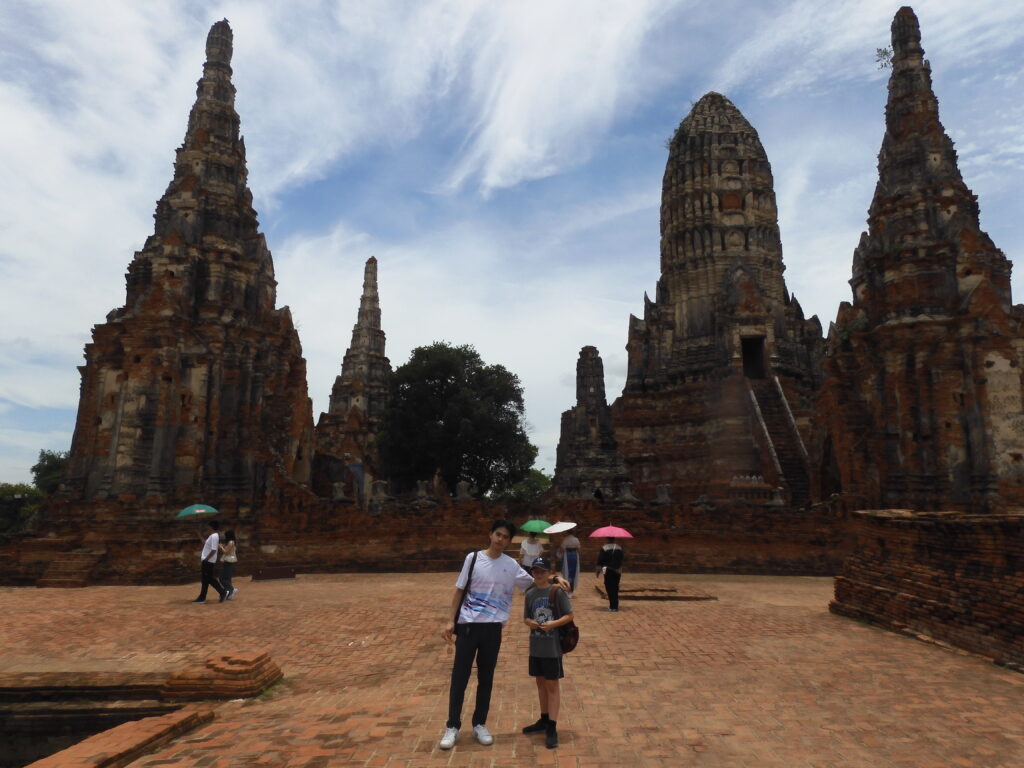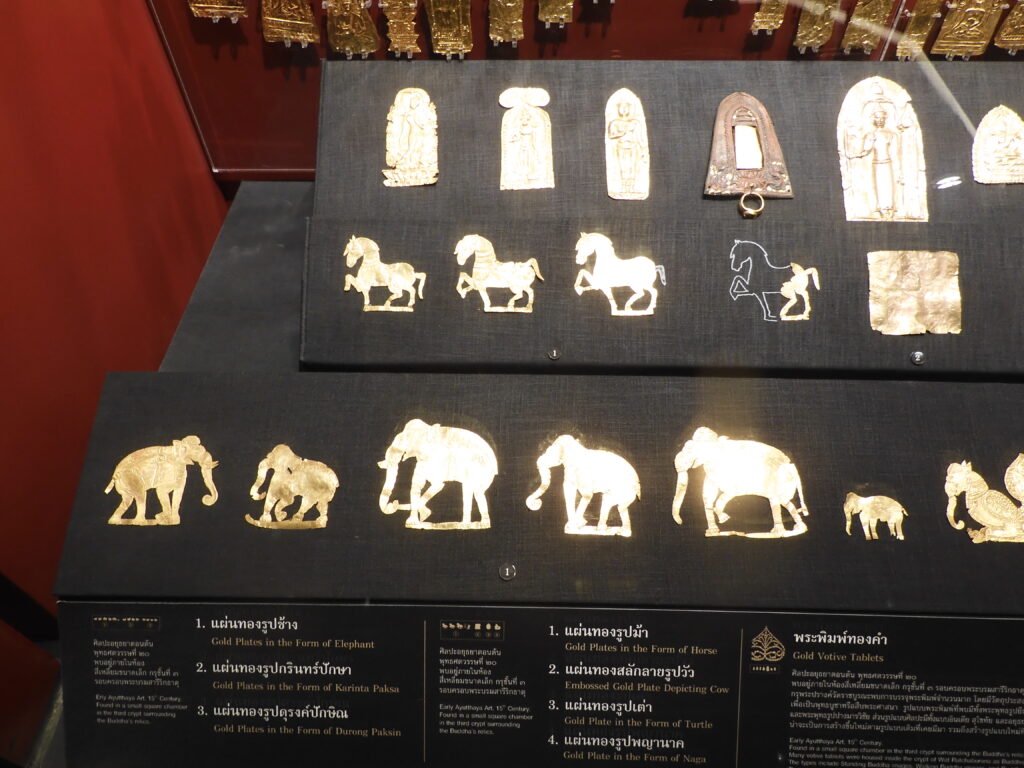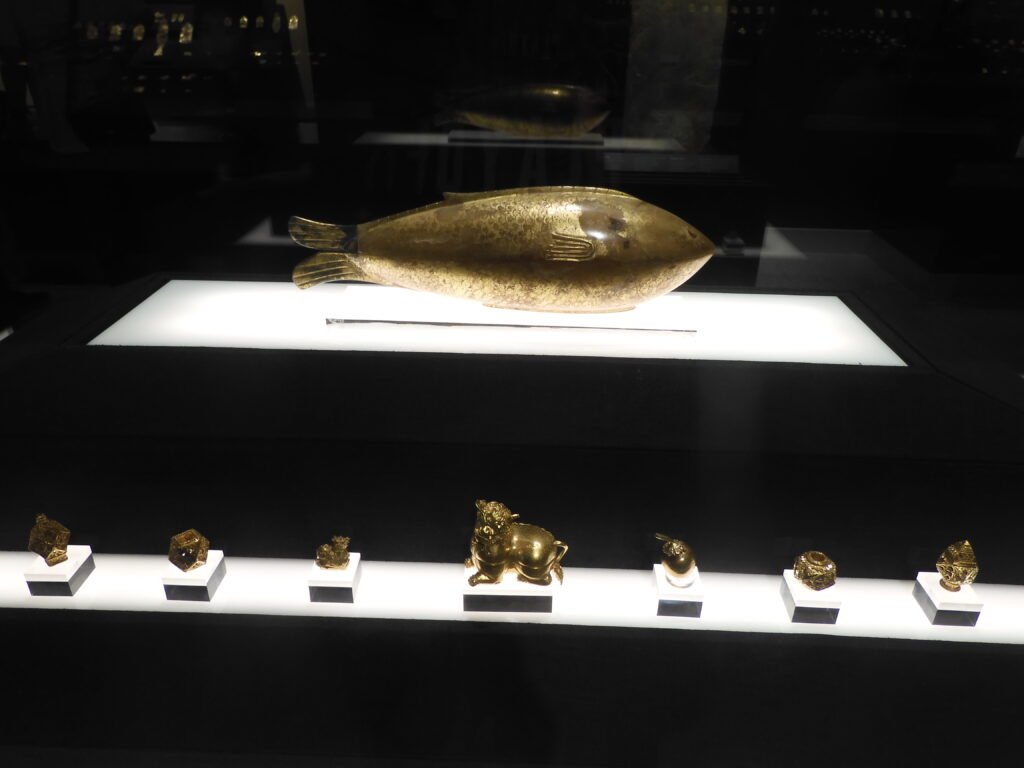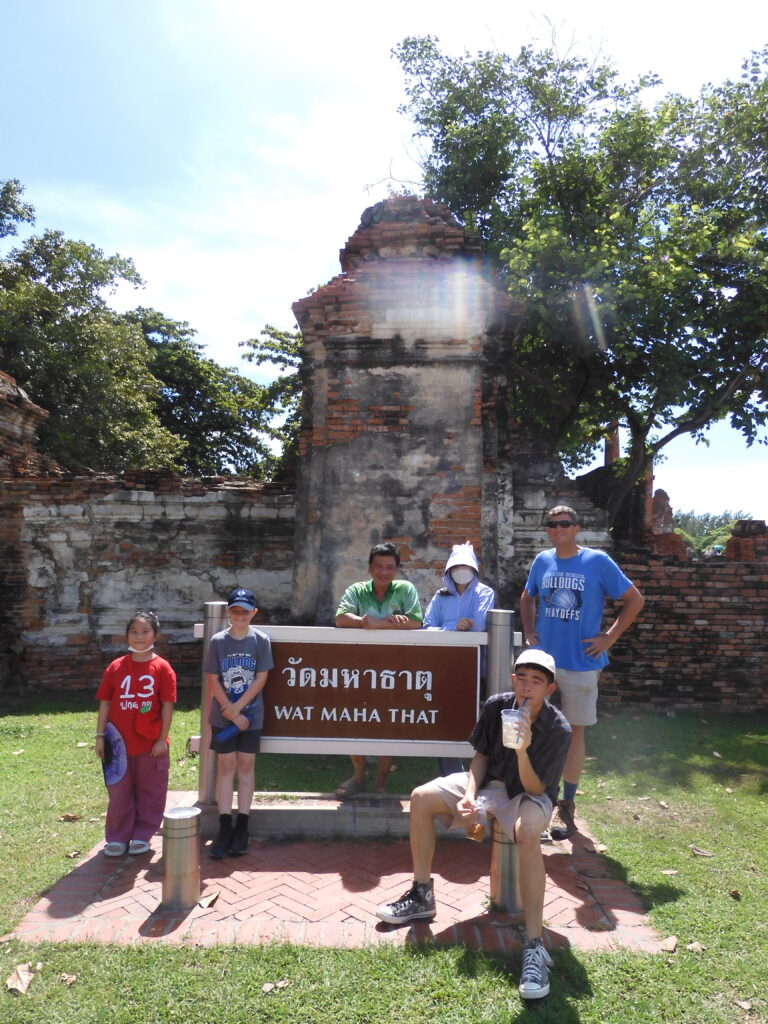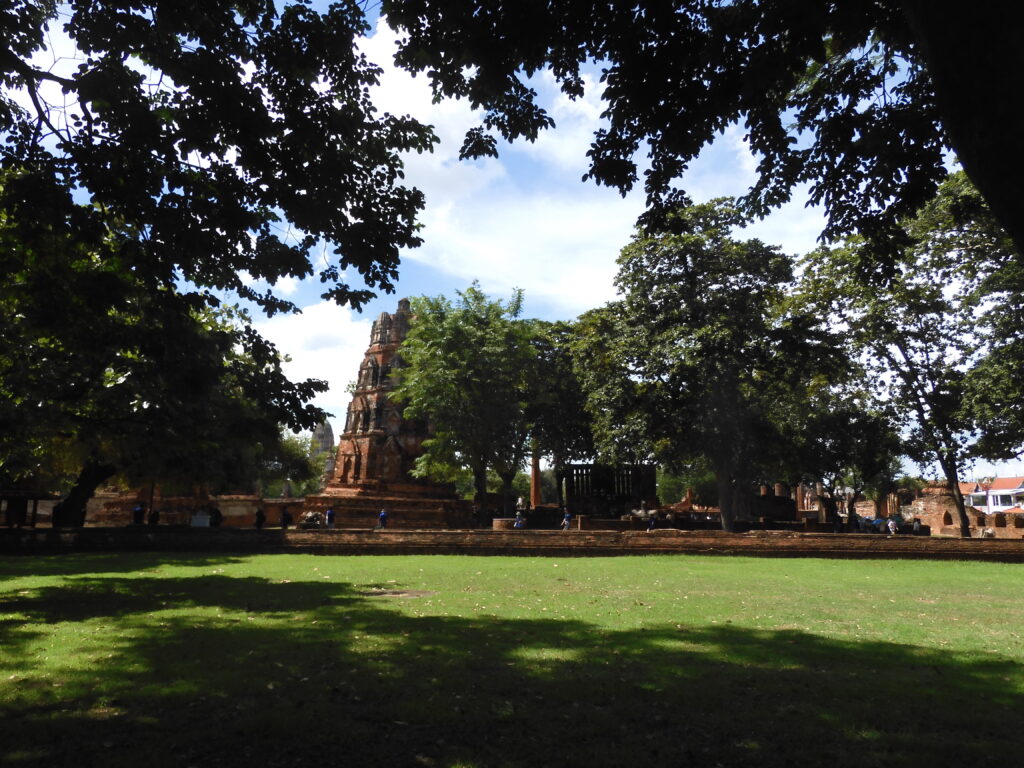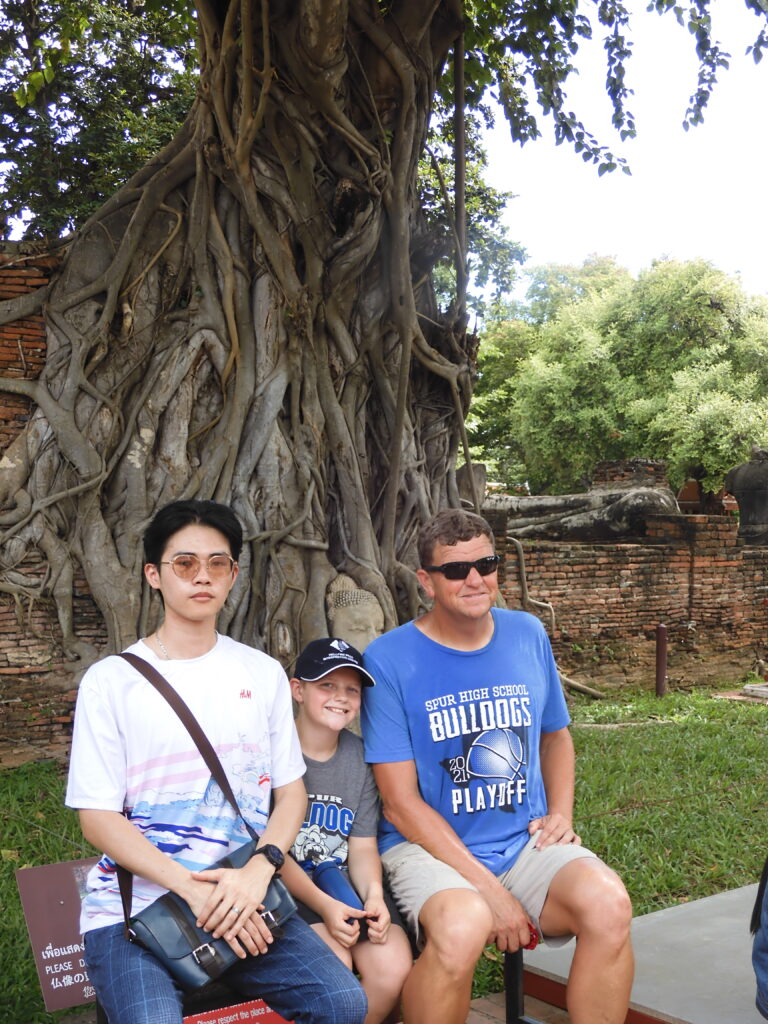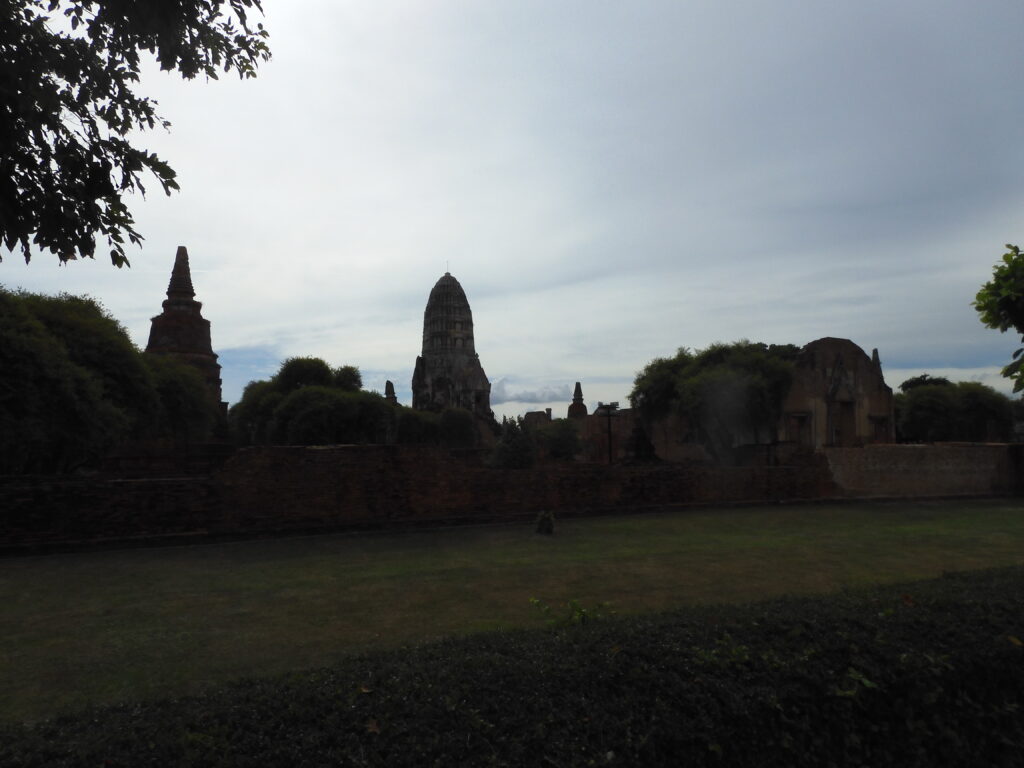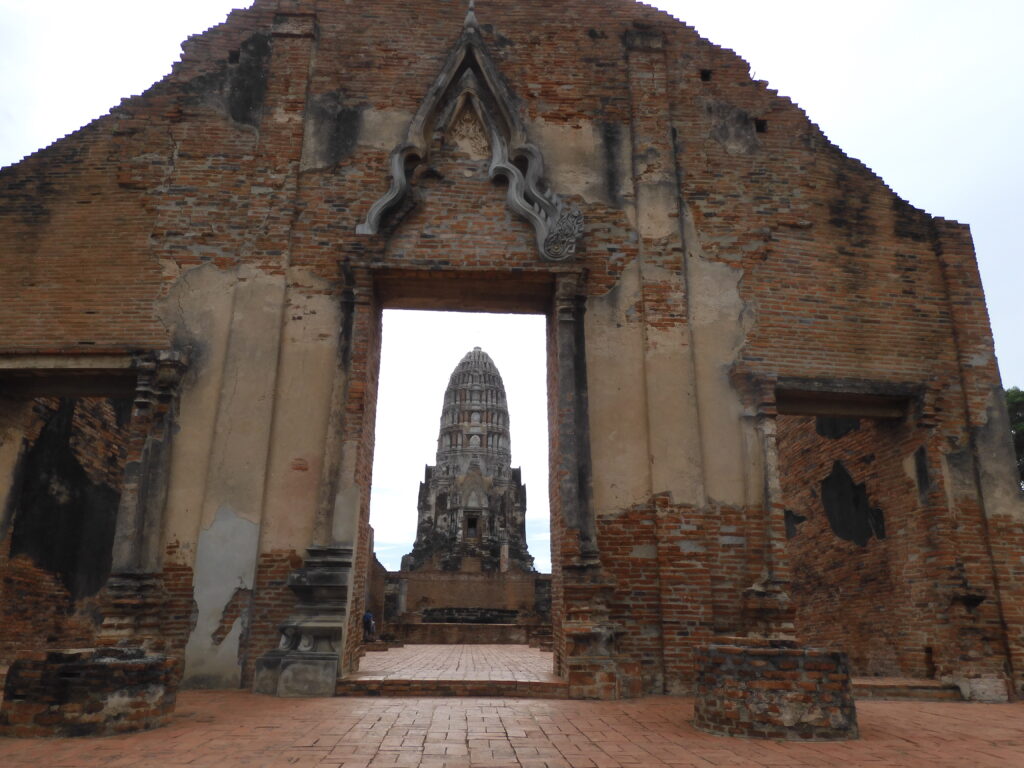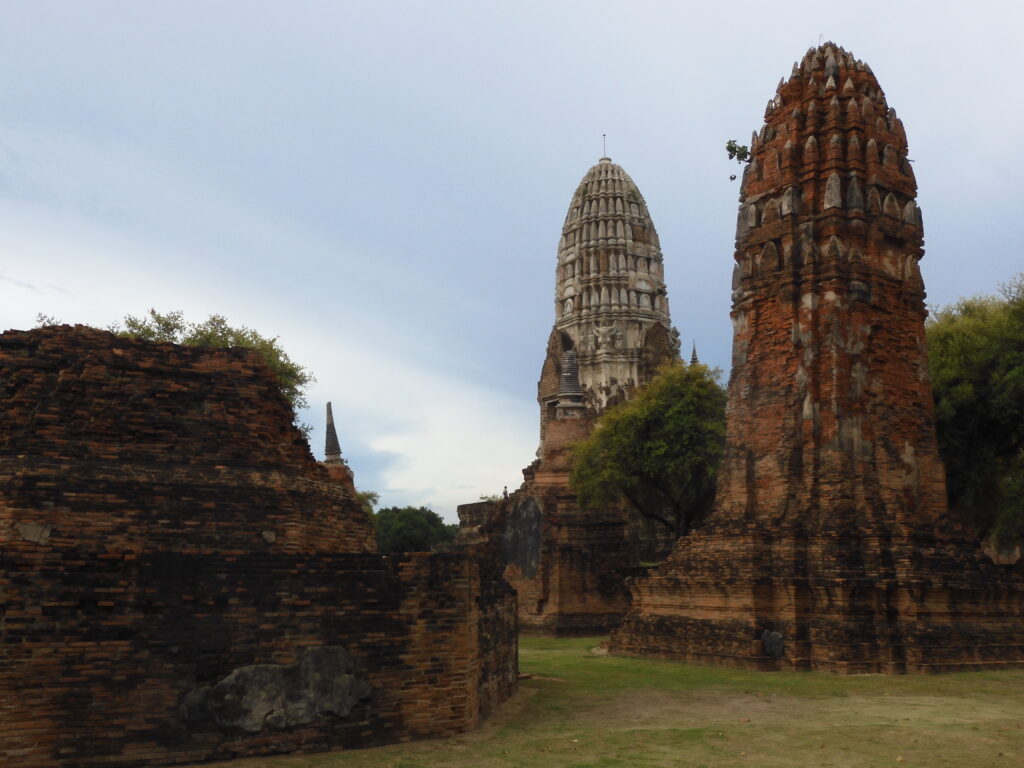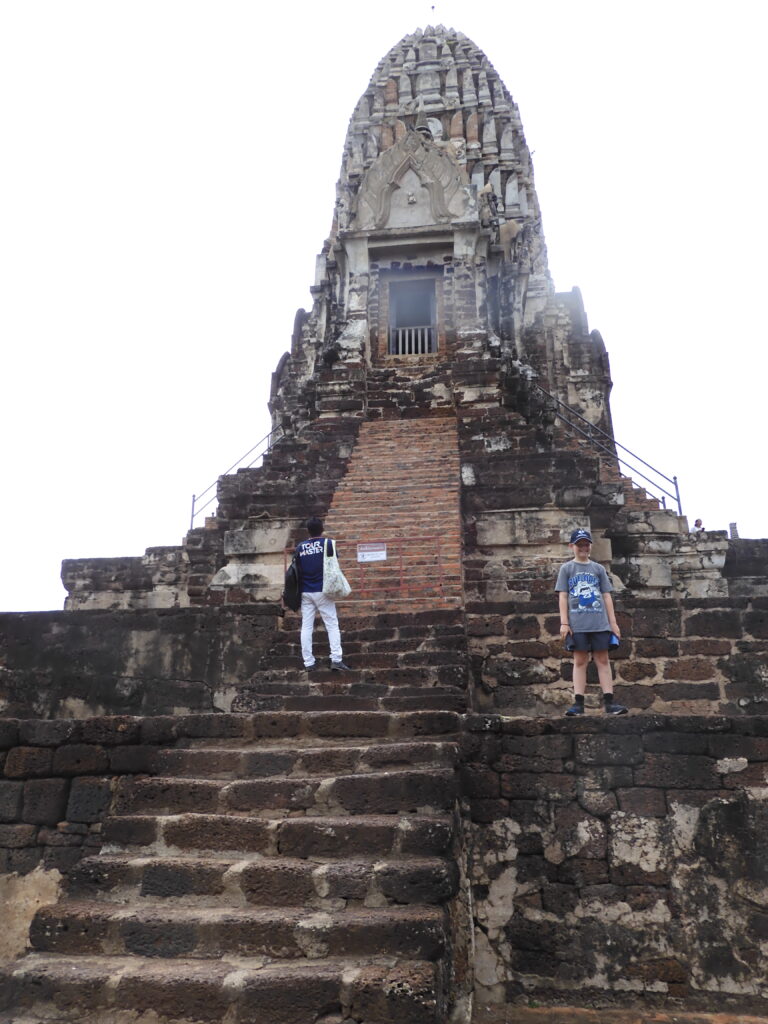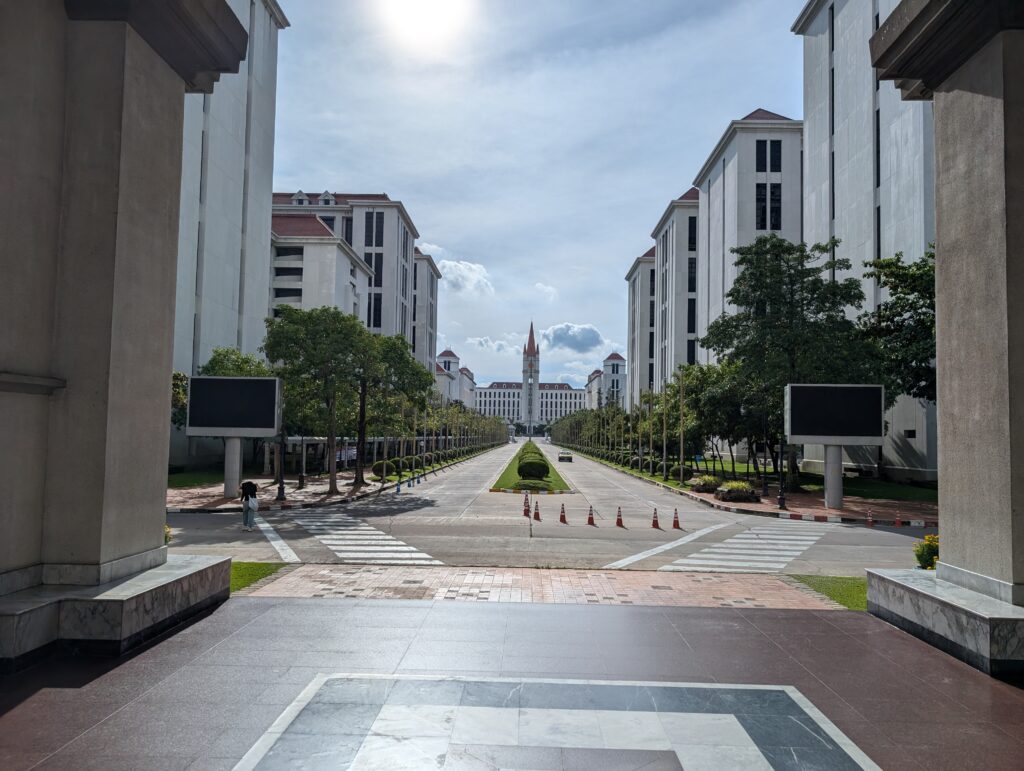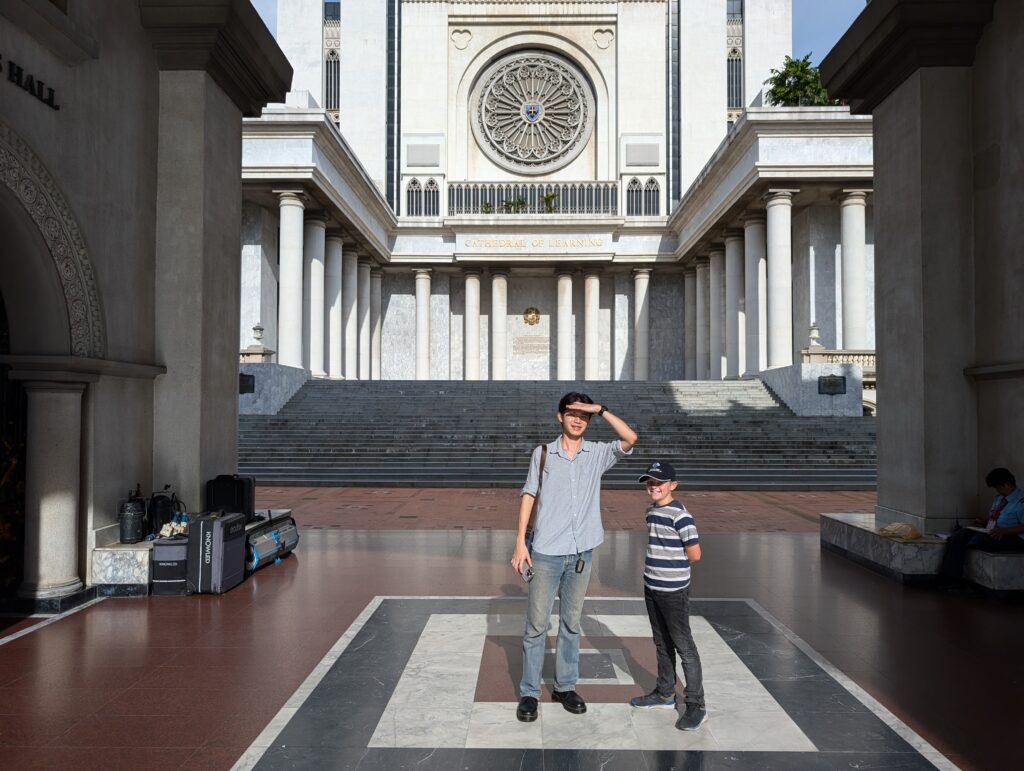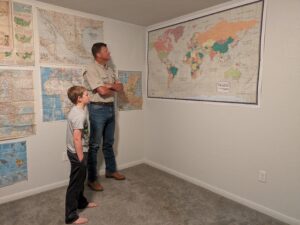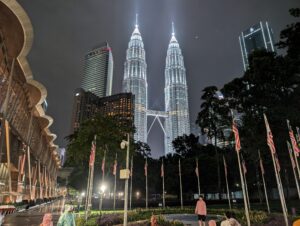Bangkok
Thailand's Chief City
Caleb slept in very late Thursday. By the time he was up and had eaten some breakfast, it was close to noon. That did not leave a long time for sightseeing, but Caleb did have one special place he wanted to visit, and it was free. So we hopped on the tangled mess of buses, subways, and elevated trains that comprise the Bangkok public transportation system. It took us over an hour to get all the way out to the Royal Thai Air Museum.
As air museums go, it was not the largest one I had seen. That makes sense, as Thailand’s history in military aviation is somewhat limited compared to the U.S. or some of the major European powers. There were some neat planes in there, though, and there was a nice explanation of how Thailand came to use air power in its military.
Both the RTAM and the museums that deal with the Burma-Thailand Railway have a difficult issue to dance around. One of the largest points of pride in Thai history is the claim that the country was never conquered or colonized. And it’s true that through deft foreign policy, strength, political agility, and strategic concessions, Thailand uniquely never suffered subjection as did India, Burma, the entire Indonesian archipelago, Vietnam, Cambodia, Laos, and most other places in this part of the world. Sometimes this came at a territorial cost. Slices of land were peeled off by England and France after border skirmishes. The Thai government felt these concessions were preferable to fighting longer unwinnable wars against military superior European powers. They were successful in maintaining their sovereignty this way where their neighbors failed.
But what about World War II? The bulk of British, French, and Dutch possessions in Southeast Asia fell into Japanese control almost simultaneous to Japan’s attack on Pearl Harbor in December of 1941. How did Thailand maintain its sovereignty when these other, more powerful players were run out of every neighboring territory?
As we learned earlier when they decided to build the railway, Japanese troops needed access to Burma. They anticipated crossing swords with the British in and around India. To get there, they needed to cross Thailand. Thailand did not immediately allow Japan that access, so Japan attacked them. Within a matter of about five hours, Thailand capitulated and agreed to allow Japanese passage through Thailand, as well as an alliance. So although it may have been under duress, Thailand was technically an Axis power. Thailand did fight several small aerial engagements against allied forces that encroached on Thai airspace.
The museums took different approaches to dealing with the somewhat touchy issue of explaining why Thailand ended up siding with the Axis. The railway museums just glossed over the issue, figuring – correctly – that most visitors would never know that Thailand actually allied with Japan. The RTAM, on the other hand emphasized the Thai forces’ “valiant” resistance to the five hour Japanese war, and then their valiance in fighting off allied encroachments on Thai territory, without making any value judgment or statement regarding the rectitude or wrongitude of Thailand’s quick capitulation. Finland found itself in a similar position. They chose to ally with the Axis using “the enemy of my enemy is my friend” logic, because the Soviet Union was their greater enemy and threat. I am curious if and how this is presented in Finnish telling of war history.
The strong point of the museum was their nice collection of genuine vintage Thai military planes. Outside of the main building, they had quite a few other trainers, helicopters, and a few simulators. It certainly didn’t match the collections that can be seen at the better American air museums, or even the Spanish Air Force Academy I visited in February. We enjoyed walking around looking at planes, and I read most of the placards, even if Caleb was a bit reluctant to. After we negotiated the long trek back to Sukhumvit, we tried some inexpensive hole-in-the-wall Thai food. We enjoyed it, and then retired for the evening.
We made Friday our primary Bangkok tourist sightseeing day. We headed down to the Royal Palace and Wat Pho, the temple of the reclining Buddha. None of the religious sites in Thailand to this point had made us do anything more than remove our shoes to enter, so I was not expecting to have to cover up to enter a royal residence. Nevertheless, we learned that rule on arrival, forcing me to buy a really crummy, nonbreathable, uncomfortable pair of pants for 200 baht just to enter.
We first walked the royal palace complex. It consisted of many different Hindu influenced Buddhist shrines that we could walk. We weren’t allowed to walk through the royal residence. There was a free English tour that started periodically, so we joined this. The guide’s English was difficult to understand, but she did offer some information about the murals on the walls and the formation of the temples. Thailand still has a monarchy. We learned from our interaction with Vun’s family that the royal family is relatively popular with the older generation of Thais, but most younger people would just as soon do away with the system. The current king of Thailand is commonly referred to as “Rama X.” He is the tenth in the current monarchical line. This line claims some tie to Hindu gods, and so their reign and their buildings all have certain Hindu influences. As has been mentioned before, however, Buddhism seems far more open to synchretistic practices than other world religions, and several sites we have visited were held sacred by both Hindus and Buddhists.
(Continued)

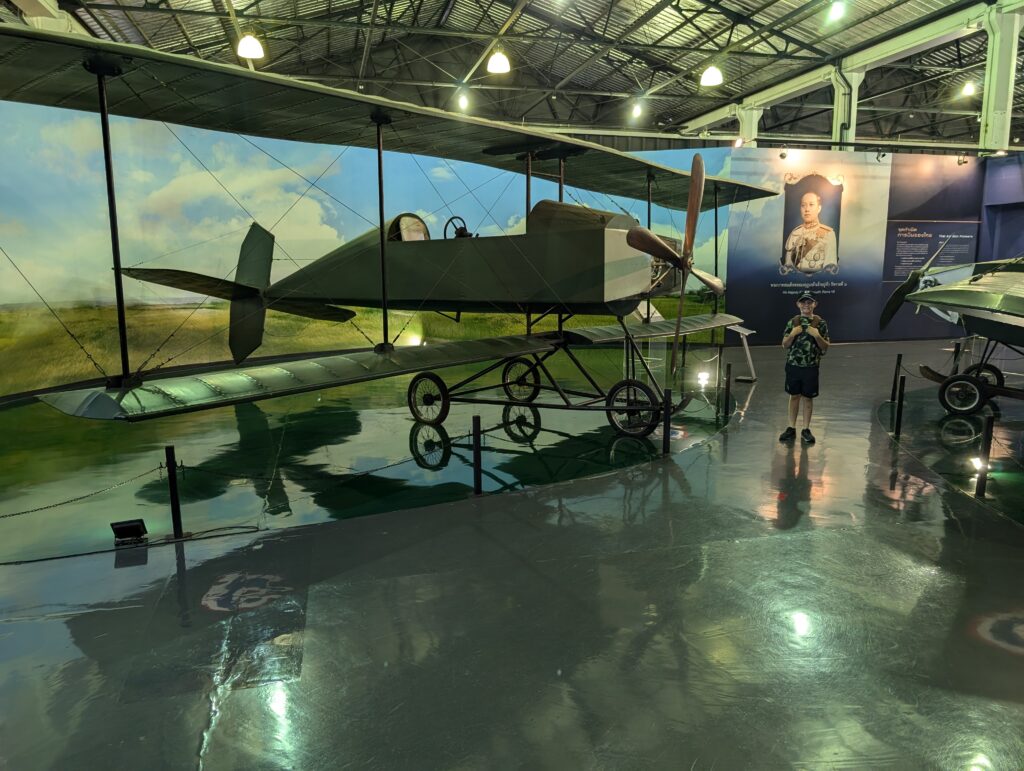
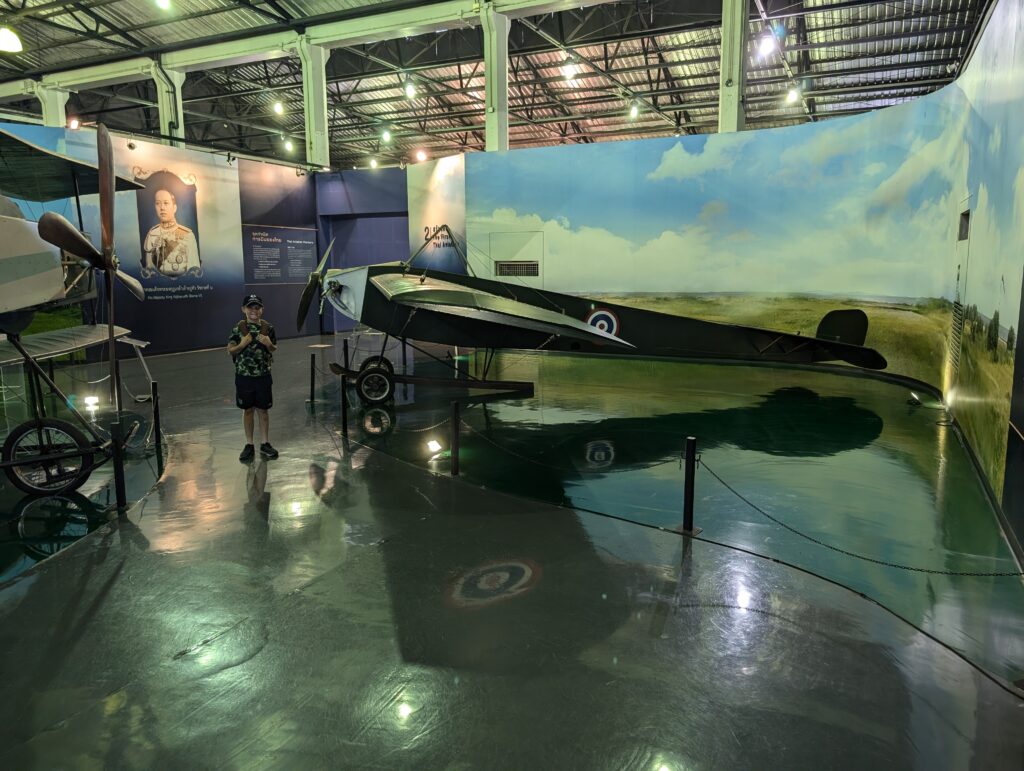
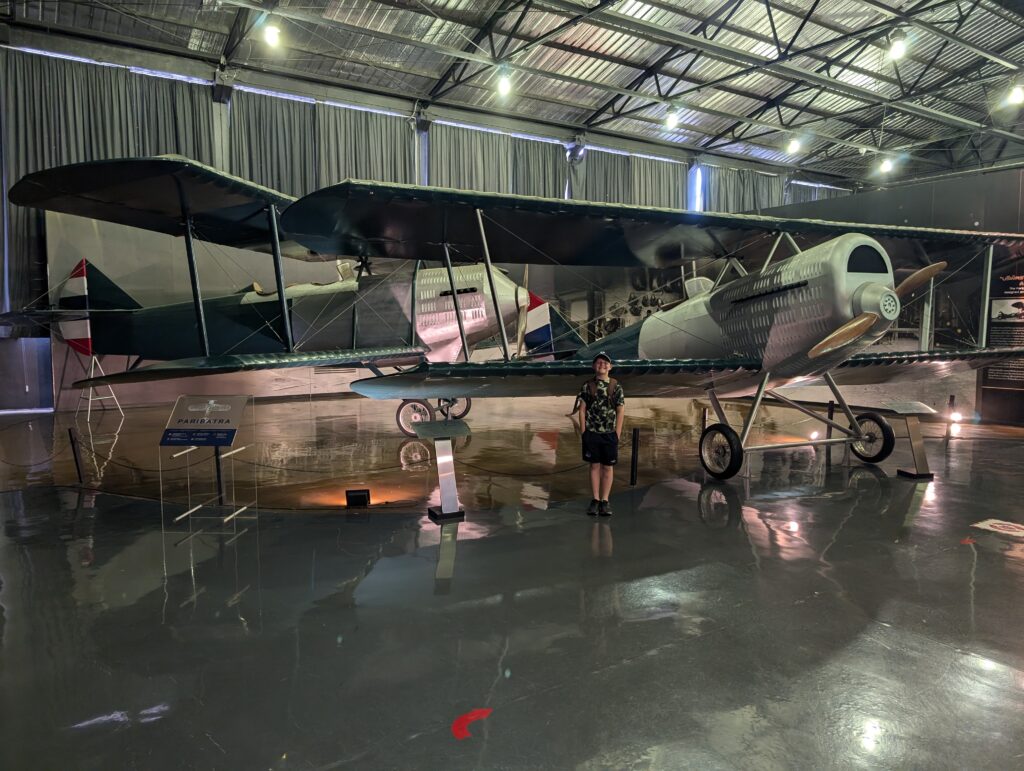
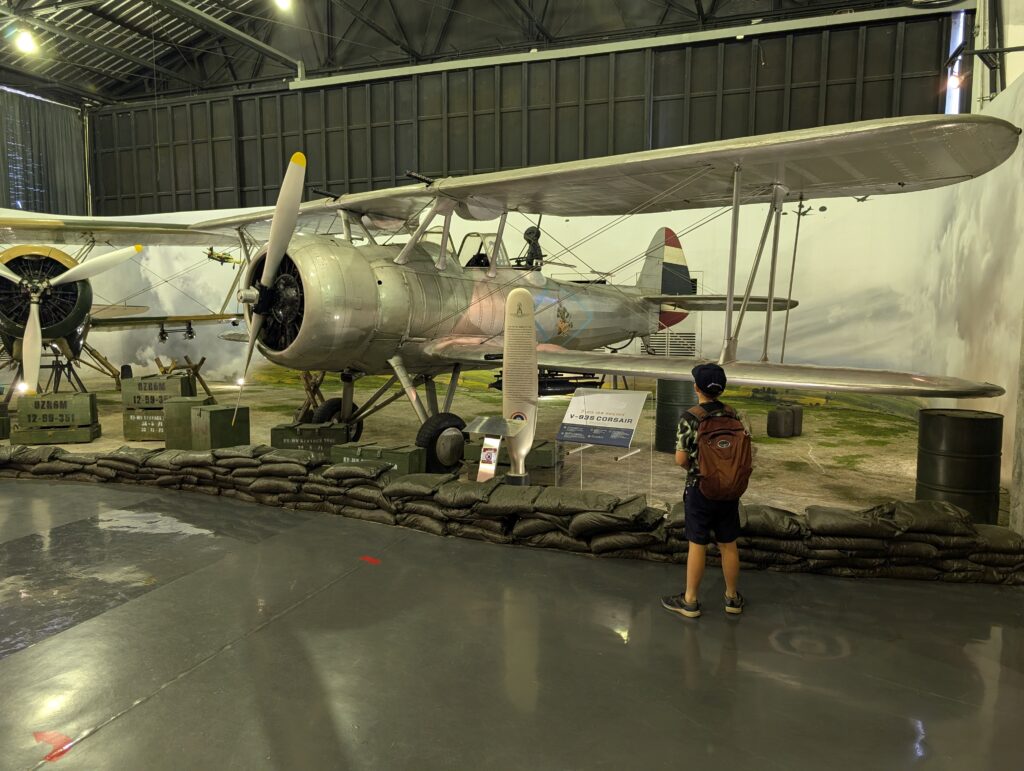
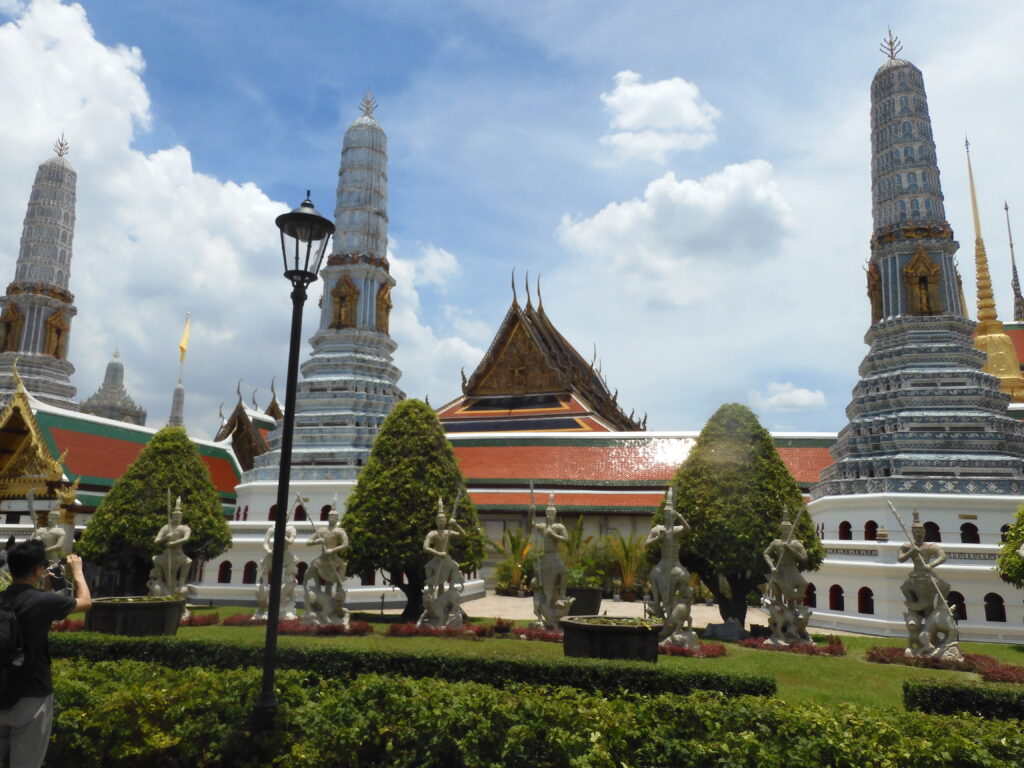
The whole palace area was extremely busy and crowded, even though it was a weekday. It was hot and humid, and the guide was difficult to understand. We made our way around the complex, taking photos and trying to glean as much as we could from the experience. The murals were beautiful, with gilded paint creating a bright shine even with the overcast sky. All of the murals were modern recreations, though. None of them could have withstood the environment and remained intact for the centuries since the capital had been moved to Bangkok by King Rama I in 1782. Many of the exterior structures here, such as the chedi look very Thai, while in others you can clearly see influences from Khmer or Chinese architecture. This also shows how blended Buddhism can be. As beautiful and interesting as it was, it was also a hot, tiring experience. Eventually a thundershower popped up. This freshened the air a bit and thinned out the crowd significantly.
We strolled over to the nearby temple called Wat Pho. This houses the famous “reclining Buddha” statue. Like all of the other Buddhist shrines, it is more of a complex than a single entity site. As we were walking in, we heard a solo tourist asking a guide about his price for a guided tour. We offered to join in and defray the cost. Our tour guide had worked as the equivalent of a Catholic altar boy in this shrine as a child, he said. His English wasn’t perfect, and it was clear that sometimes he was oversimplifying some Buddhist terms and practices for us. I think sometimes, too, if you ask a non-native English speaking guide a question they don’t understand (or perhaps one they don’t know the answer to), they simply respond with some information they do know. This happened several times during our Wat Pho tour.
The highlight of this tour was the reclining Buddha statue, a massive gilded image over 150 feet long. The original complex was ordered by Rama I, the same king who moved the capital to Bangkok and was responsible for the construction of the palace complex. Rama III oversaw significant expansions. It is thought that the practice of traditional Thai massage was born here, and to this day the complex still houses a school teaching those techniques. Once our visit at Wat Pho was complete, I gladly shed the horrible, stuffy, pajama shaped pants and let my clammy legs breathe again. We navigated the crowded metro system back to Sukhumvit where we enjoyed a Japanese meal. Caleb was excited for the Japanese food, as this is something he is familiar with. We have several Japanese restaurants in Lubbock, surprisingly. Vun returned to resume his role as Thailand tour guide for us that evening as well, though he did not arrive until 10:30.
We spent Saturday exploring Ayutthaya, which was a historical capital of Thailand back when it was known as Siam. Siam’s original capital city was at a place called Sukhothai. The capital was moved to Ayutthaya in about 1350, because it was a site that was raised enough to be out of the flood plain, and close enough to the gulf of Thailand to be a river port without being susceptible to attacks by enemy warships. Ayutthaya was burned to the ground by the Burmese in 1767. The city was abandoned and never rebuilt on the same site. Shortly thereafter, the capital was moved to Bangkok.
The remains of the historical capital at Ayutthaya sit on an island in the river. I have not yet visited Angkor Wat, and so cannot compare the size of the buildings. The temple remains at Ayutthaya show that this was at one point a major capital, city, and worship complex. It’s huge. The remains of these buildings all appear to be heavily influenced by Khmer style architecture, as they look very similar to the pictures of buildings at Angkor Wat. We walked a couple of different adjacent parks with large chedi and temple structures you could climb. Most of the Buddha statues – of which there were dozens – had been damaged over time. You could see remains of many of them, though.
As we walked through the first park, I was approached by a pair of elementary school English teachers who asked if their students could briefly interview me. I of course agreed to this and had some fun chatting with the children. Learning a foreign language is difficult, but such a beneficial skill. More than once it has occurred to me that we do a great injustice to students by not introducing them to a second language much earlier. Many studies have shown that there is something in the way our brains are wired that makes it far easier in early childhood – before the age of about eight – for us to acquire language skills. Most American schools don’t get serious about teaching a second language until high school, when it will be a substantially more difficult skill to acquire.
Vun’s parents and brothers joined us from Kanchanaburi partway through the day. We visited the Thailand Gold Treasure Exhibition together. After grave robbers got to some of the historic buildings at Ayutthaya, government officials decided to proceed with excavating them. Corrupt lower level officials allowed the thievery to continue, and many items were lost. Over time, some where recovered, and the thieves didn’t find all the loot, so they still have a very nice collection of gold artifacts from the tombs associated with Ayutthaya on display here.
After the temple ruins and the museum, we headed for an early supper at a Thai seafood restaurant Vun’s parents selected. We were treated to huge portions of all different sorts of Thai seafood. Vun’s family prefers family style restaurants, so when we ate out (and when we ate at their house) we always ate family style. The only downside to this was that I didn’t always know what it was I was eating. I often asked, but got more of a description in response, rather than the name of the dish. This is understandable, of course, though not always helpful if I ever wanted to order a certain food again. I was often thankful for menus and receipts so I could record what I ate so as to replicate good meals at a later date.
Vun drove us back to Bangkok Saturday night and then stayed with us that evening. He joined us for church the following morning as well. We went to the Somprasong Church of Christ. Their service was in Thai, of course, but they had a translator speaking into a microphone that relayed the main message, prayers, and announcements to us in English through a device much like what folks with hearing impairments used to wear at church in my childhood. There was an English language Bible Class, so a translator was not needed there. The Somprasong congregation had been in place for about sixty years and had a strong core group of local people, only supplemented by American expatriates and people in town for business or pleasure. We had a very pleasant, modest meal. When it was complete, we washed our own trays and replaced them. Our interactions over lunch were limited due to language barriers. We had a nice conversation with a lady who used to teach English at Vun’s university before the campus moved to a location much further from her home a couple of decades earlier.
(Continued)
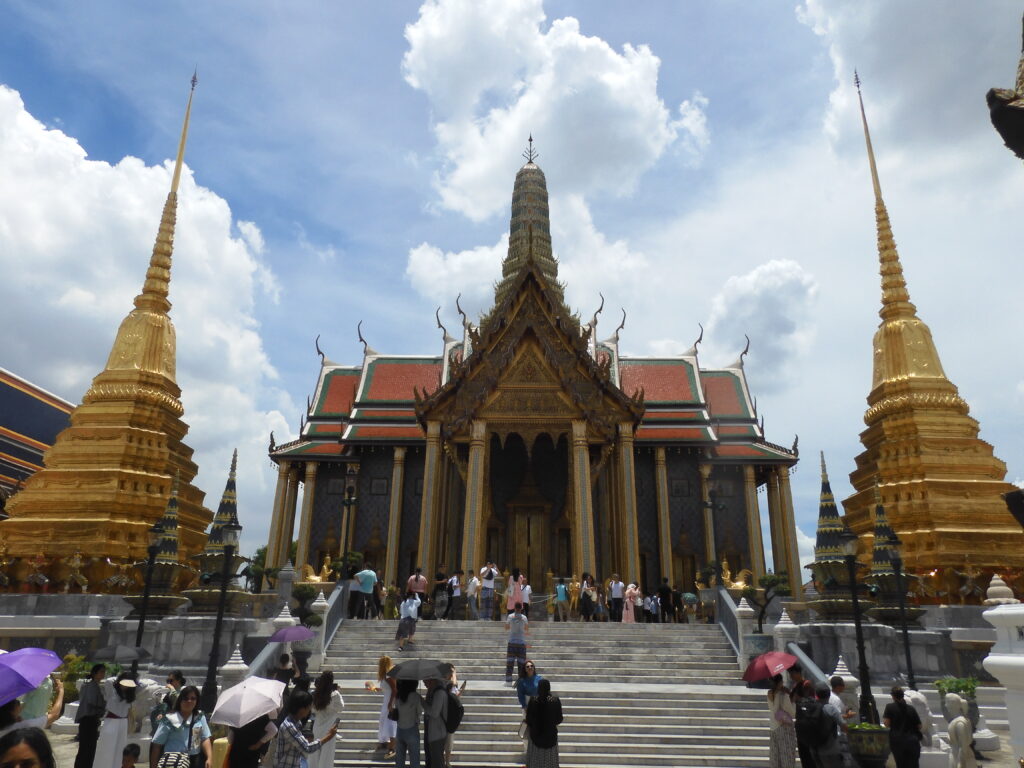
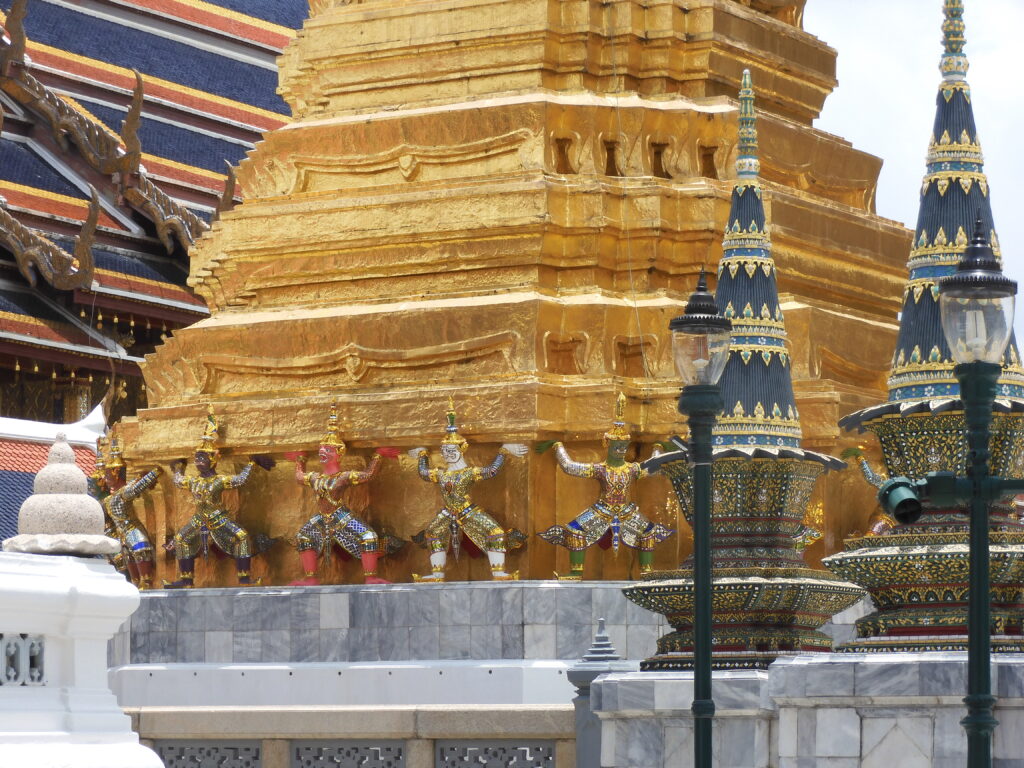
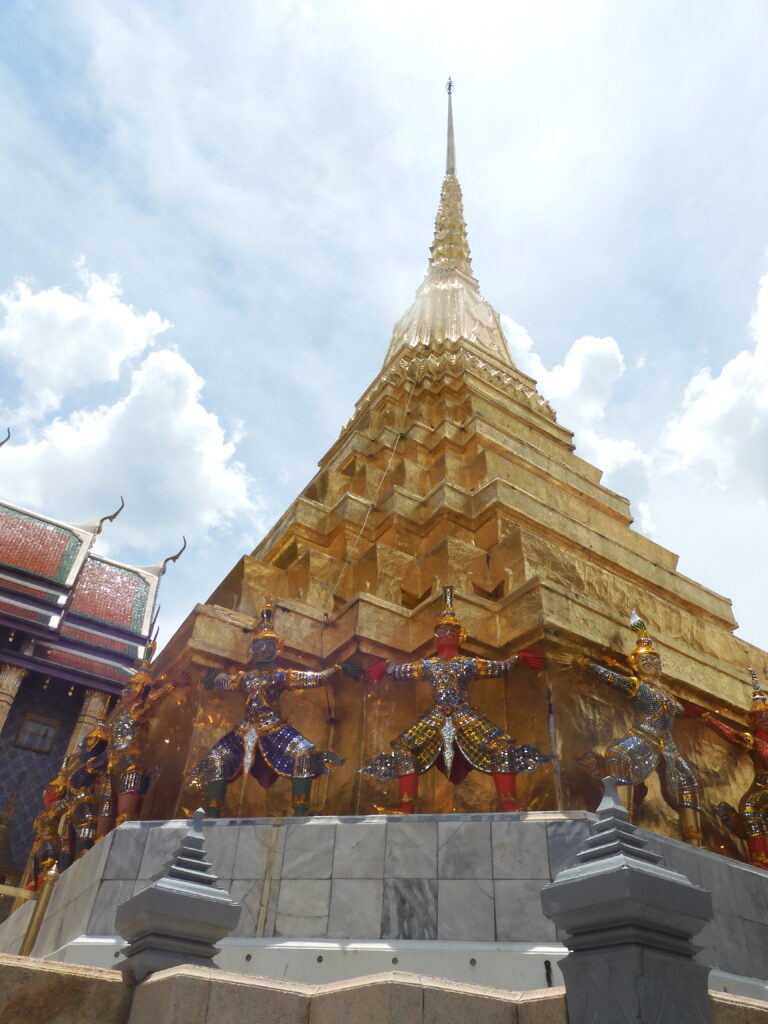
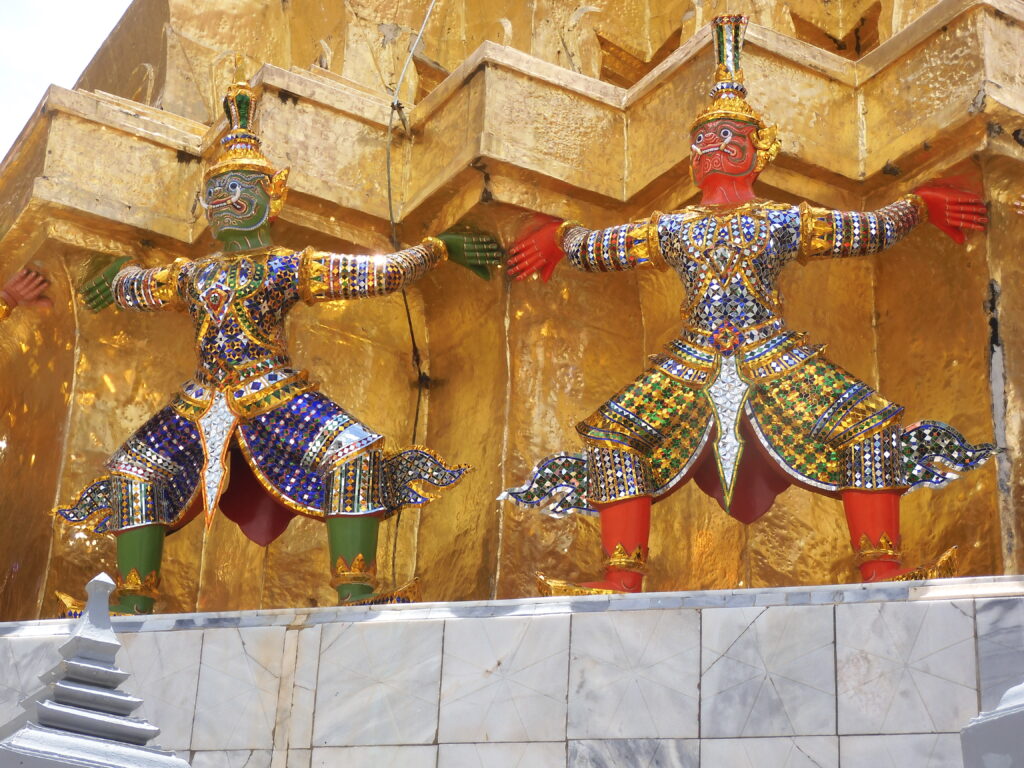


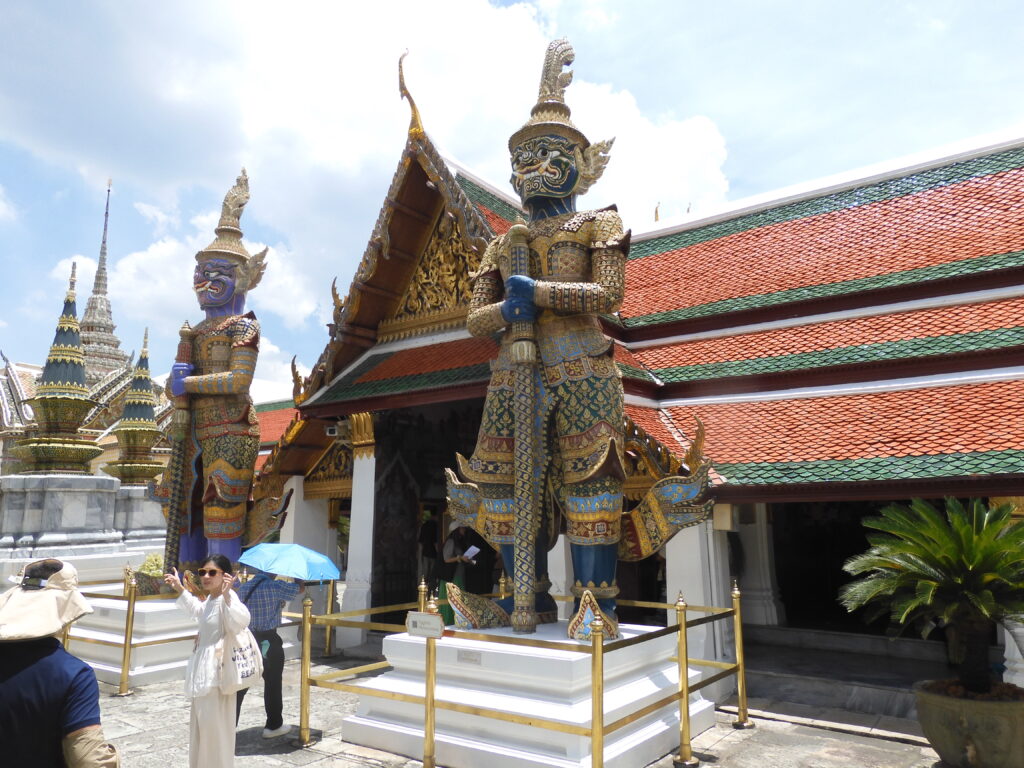
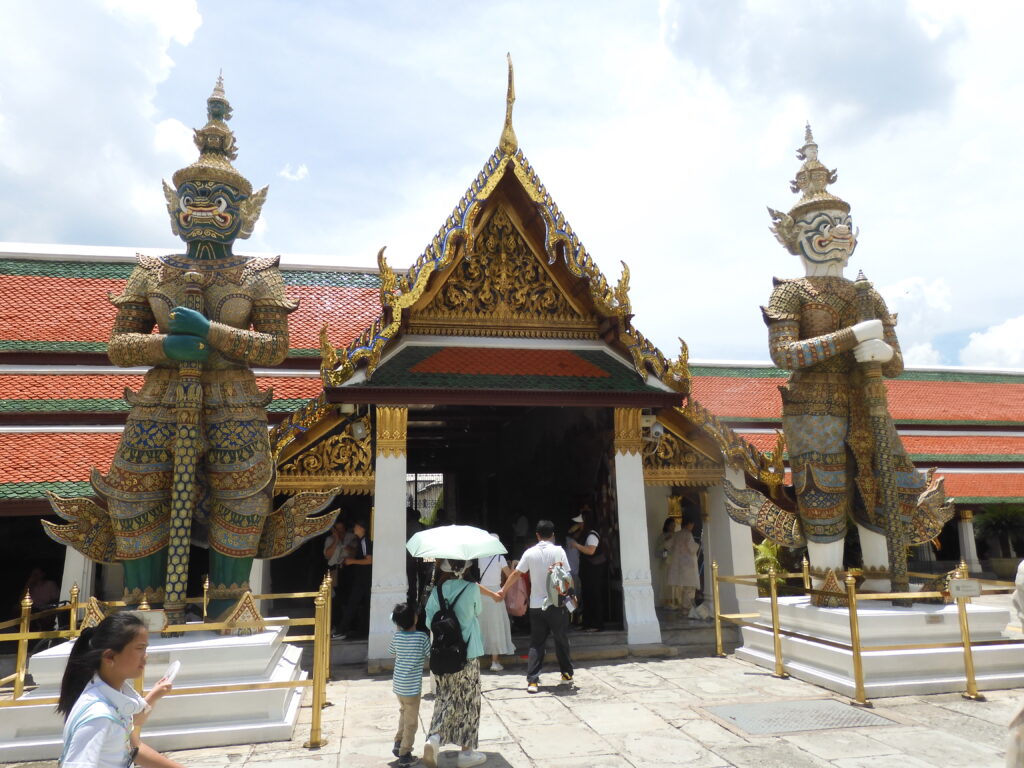
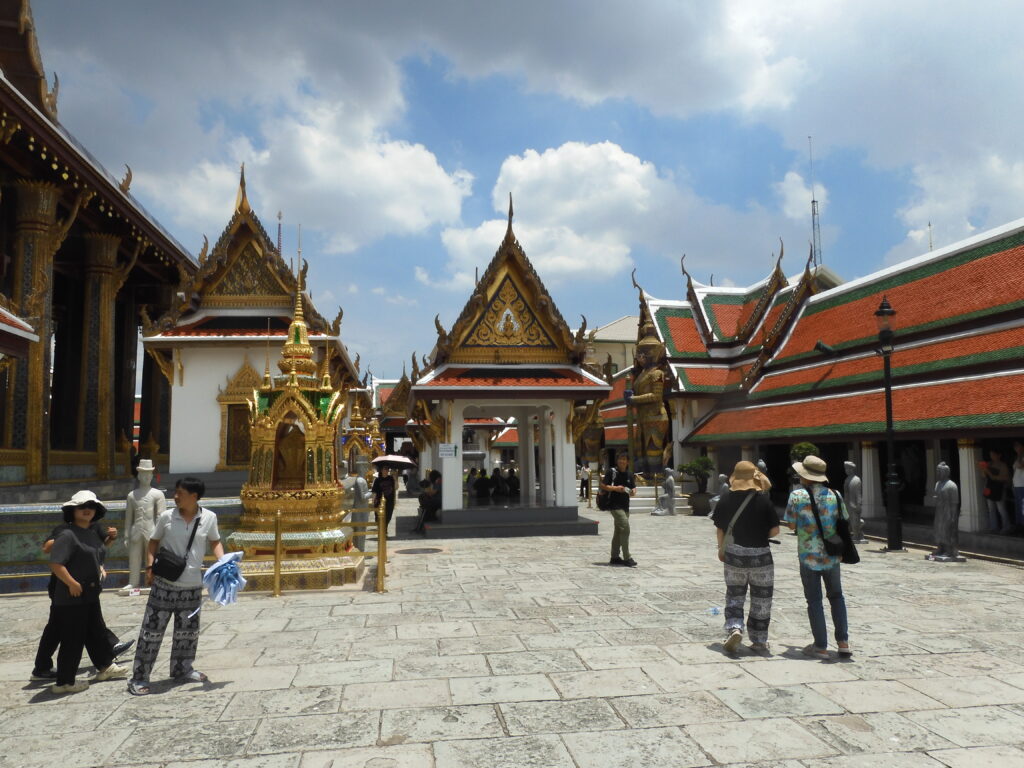
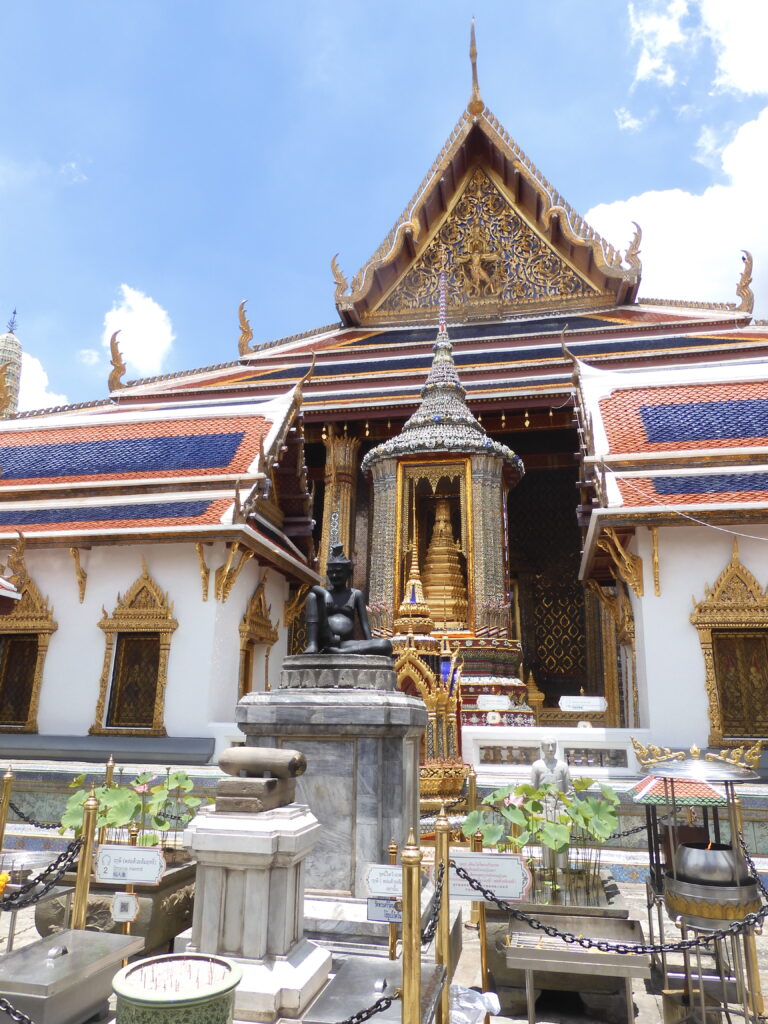
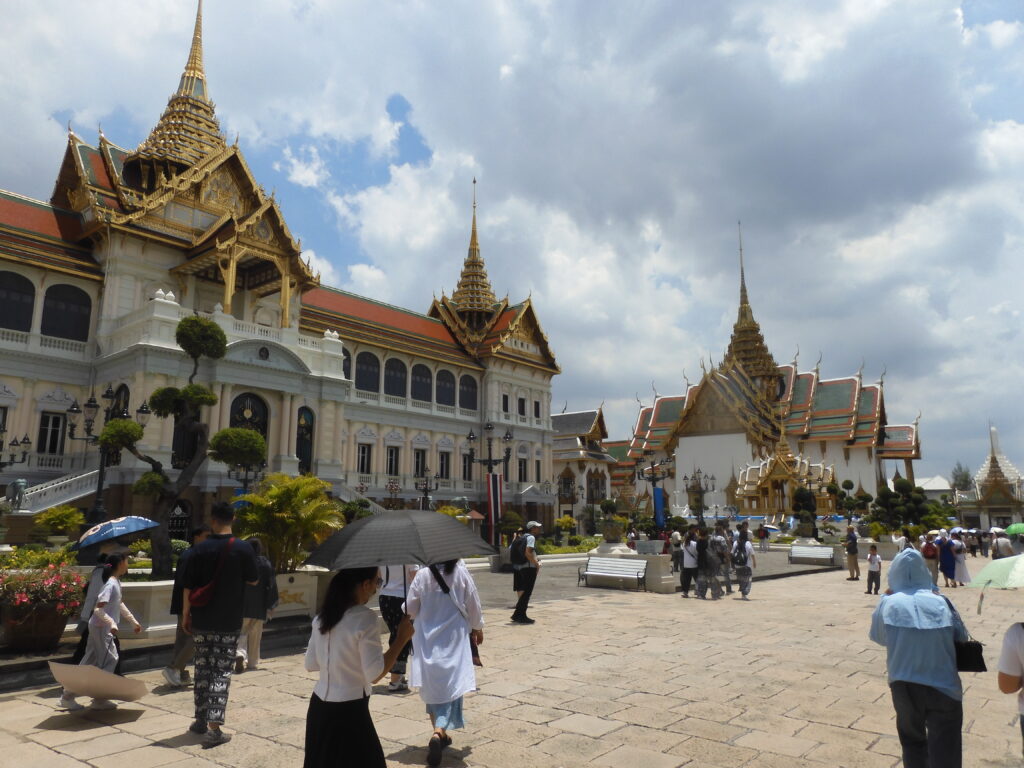
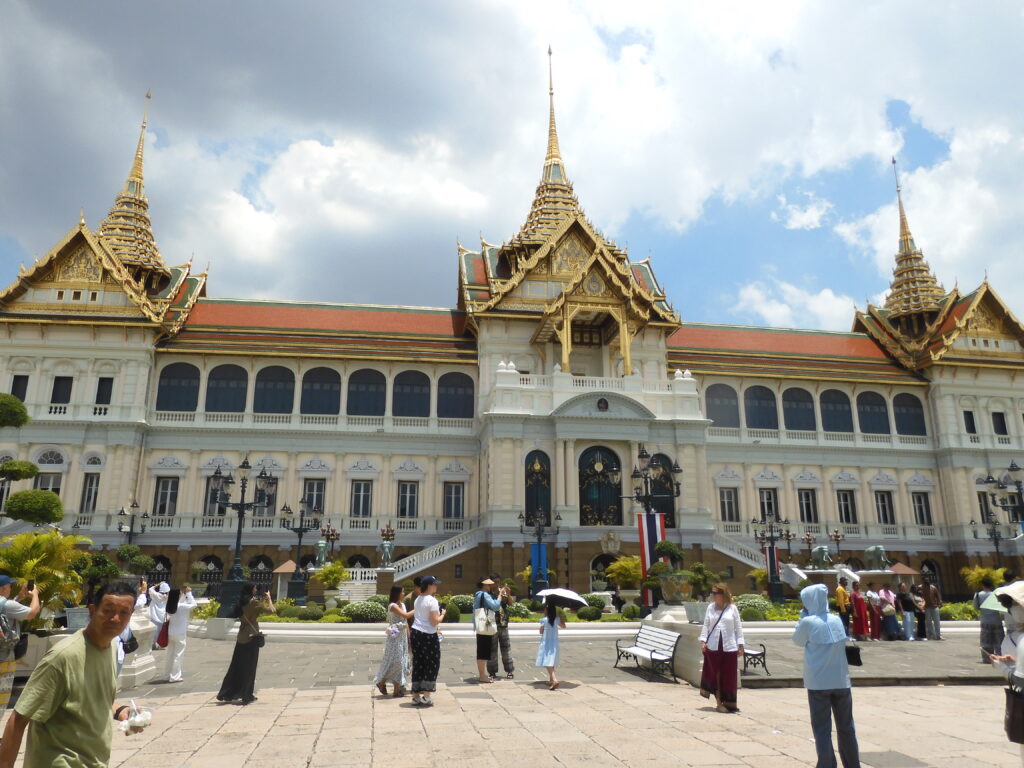
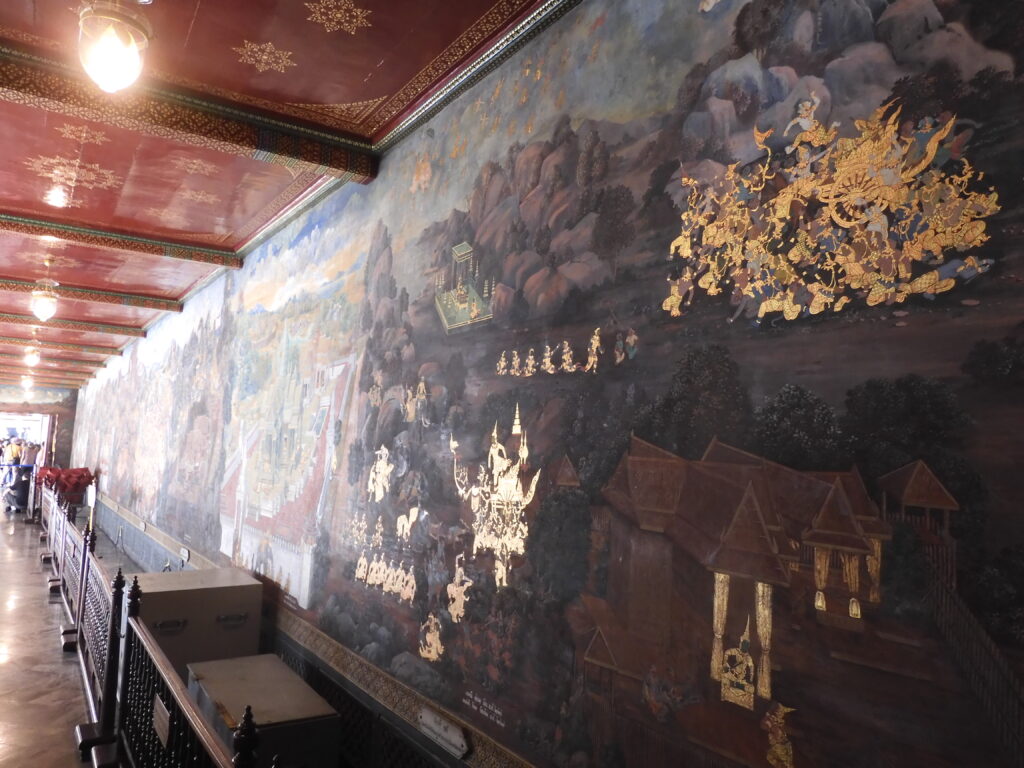
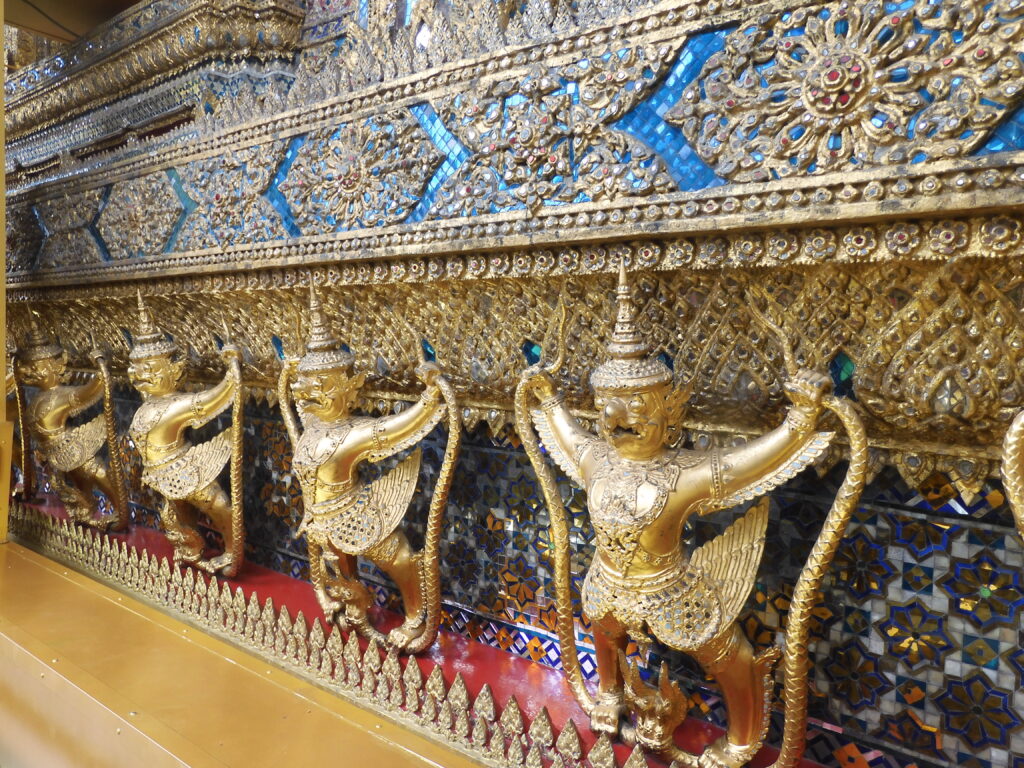
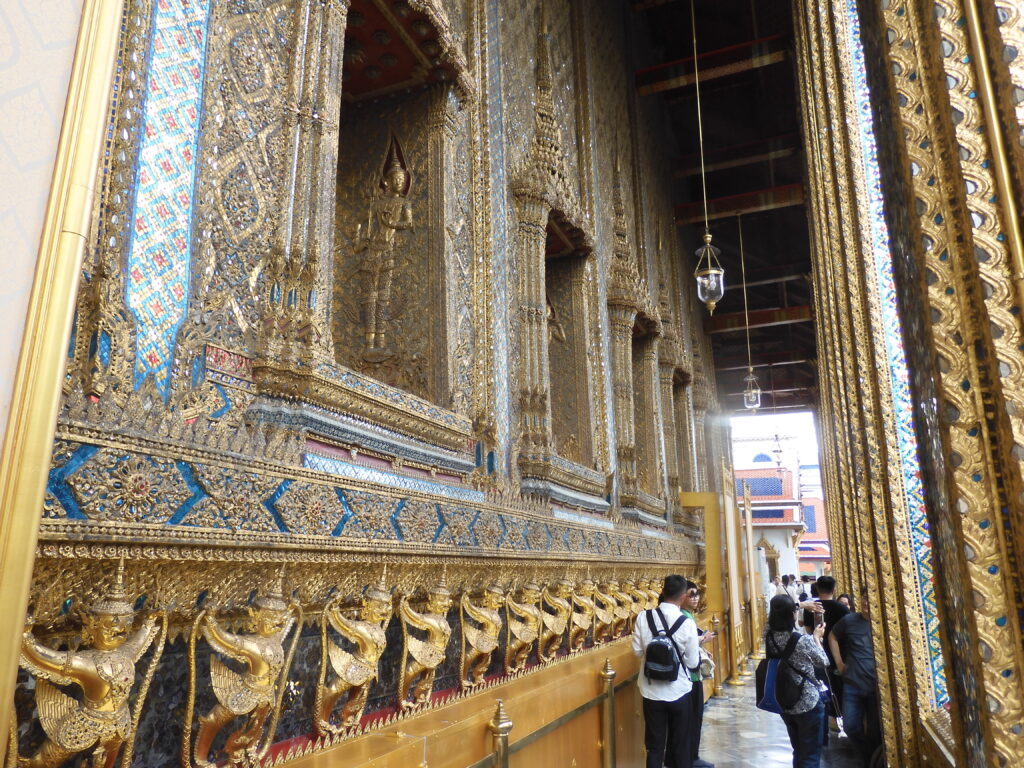
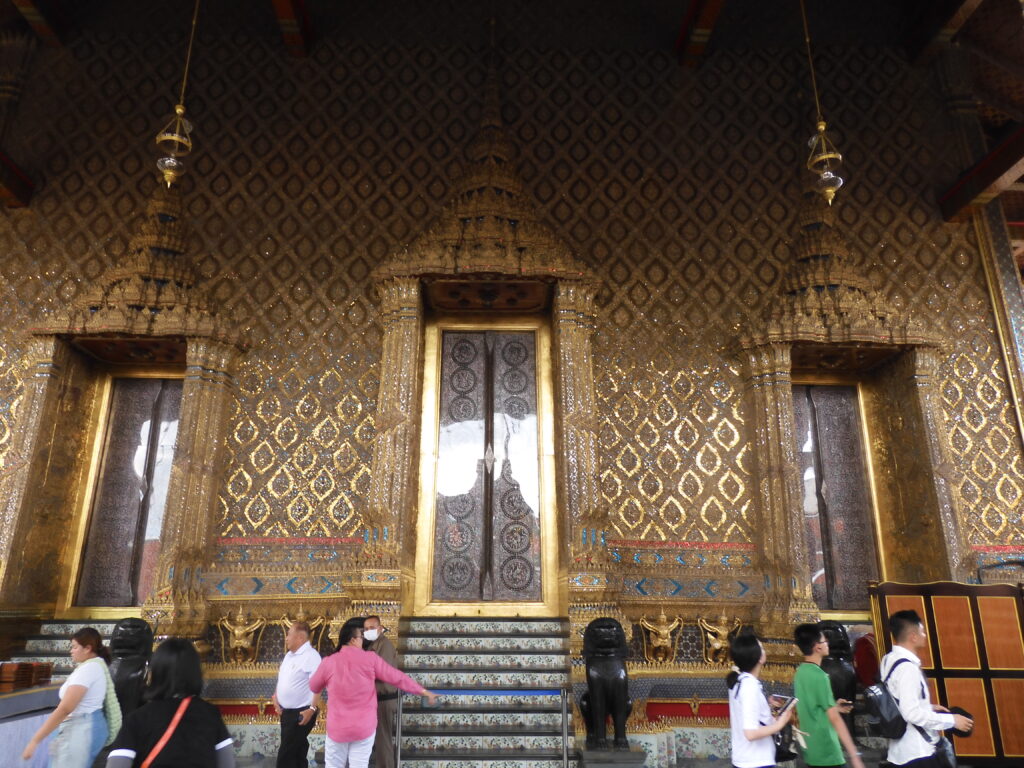
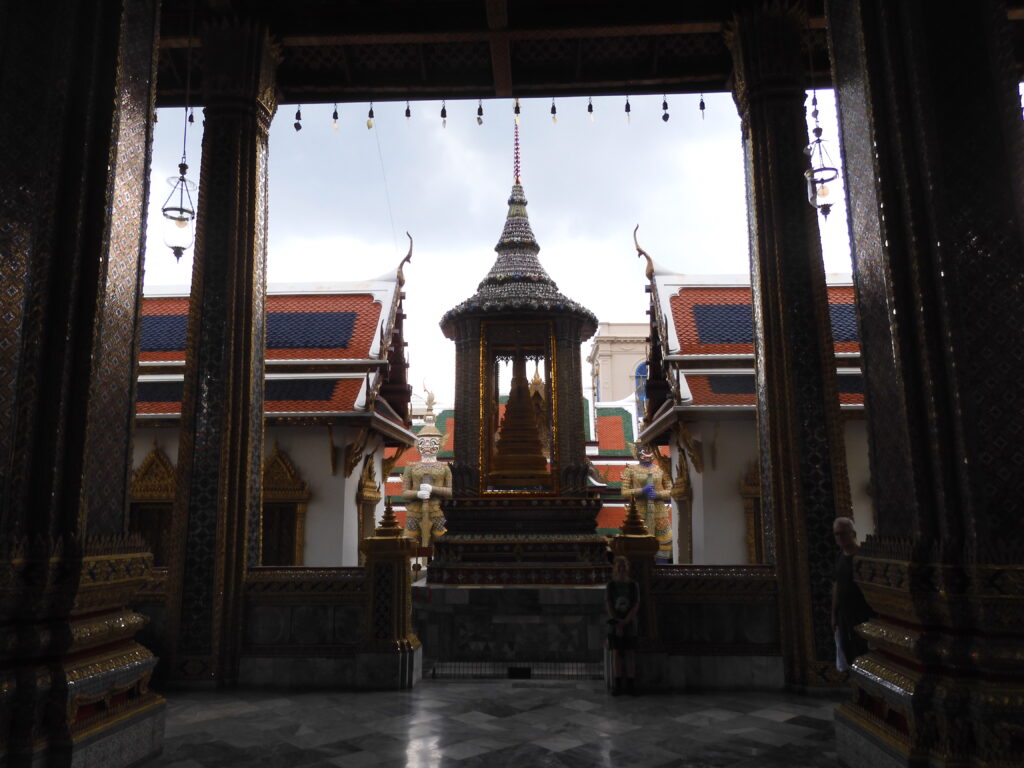
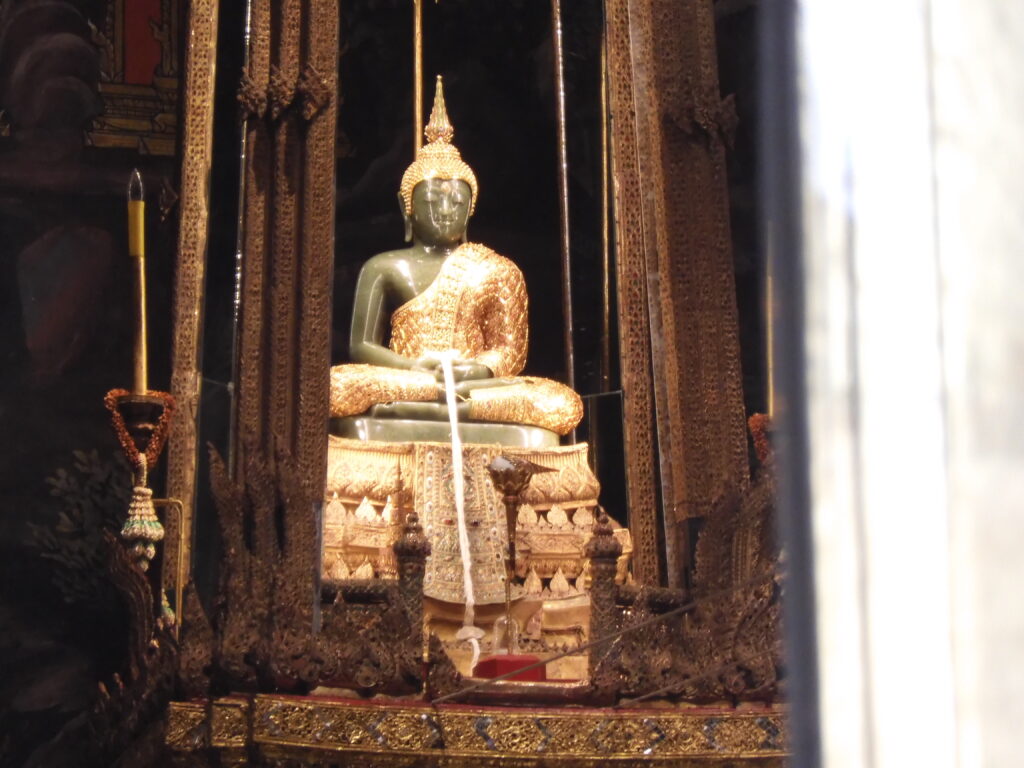
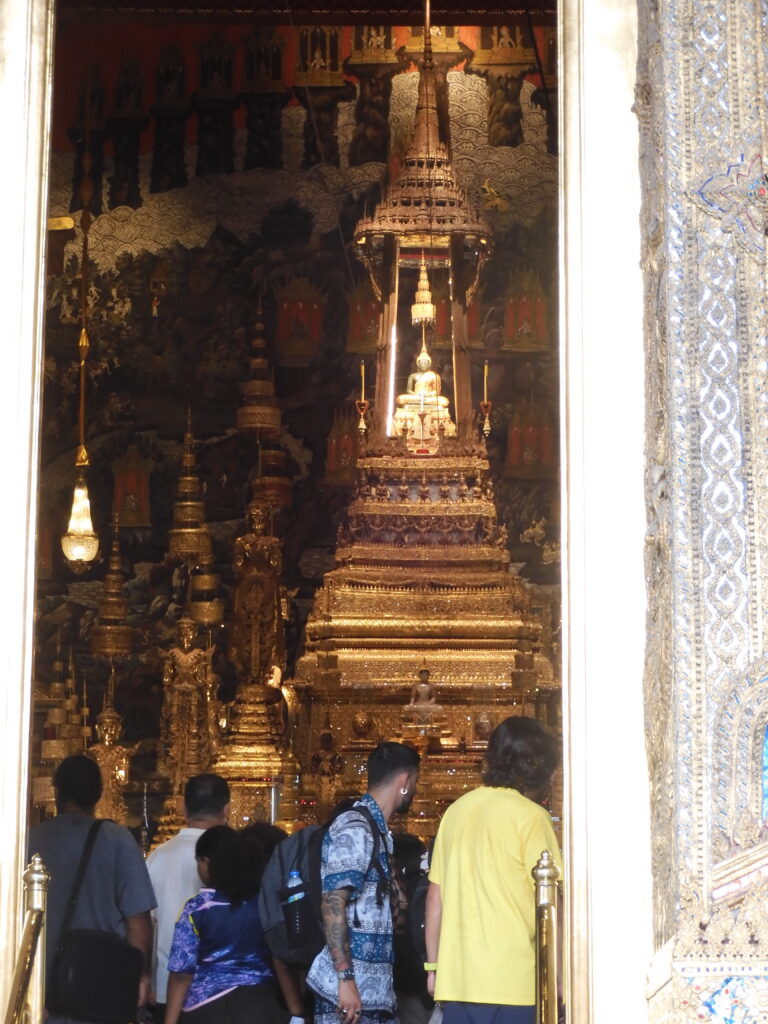
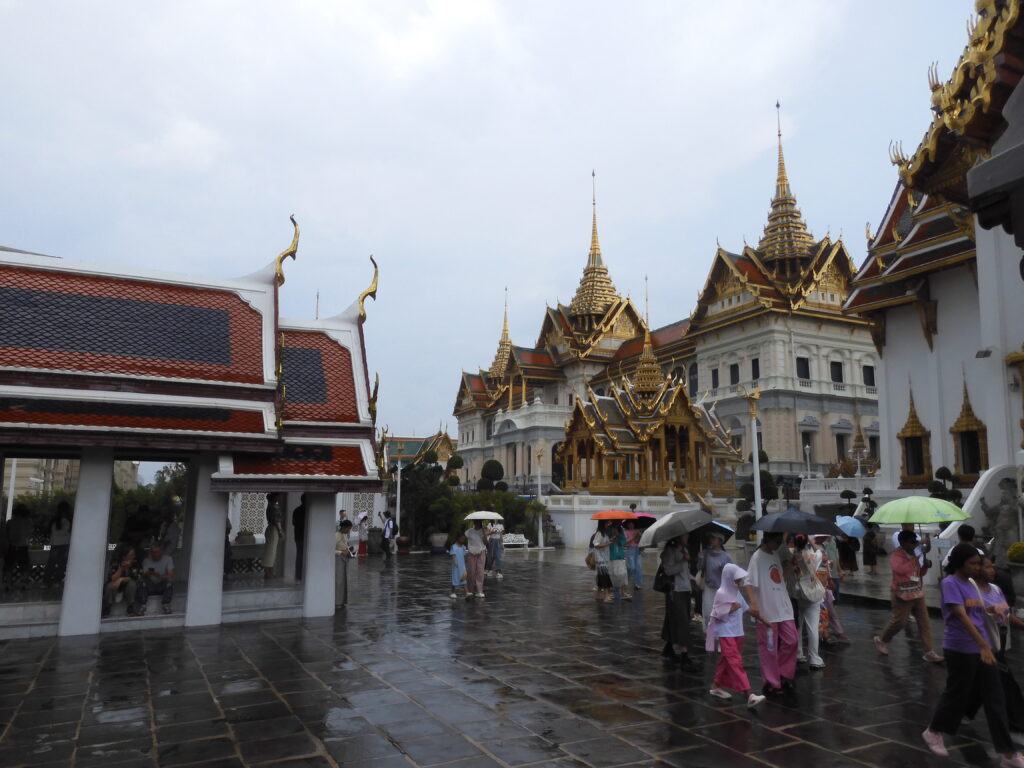

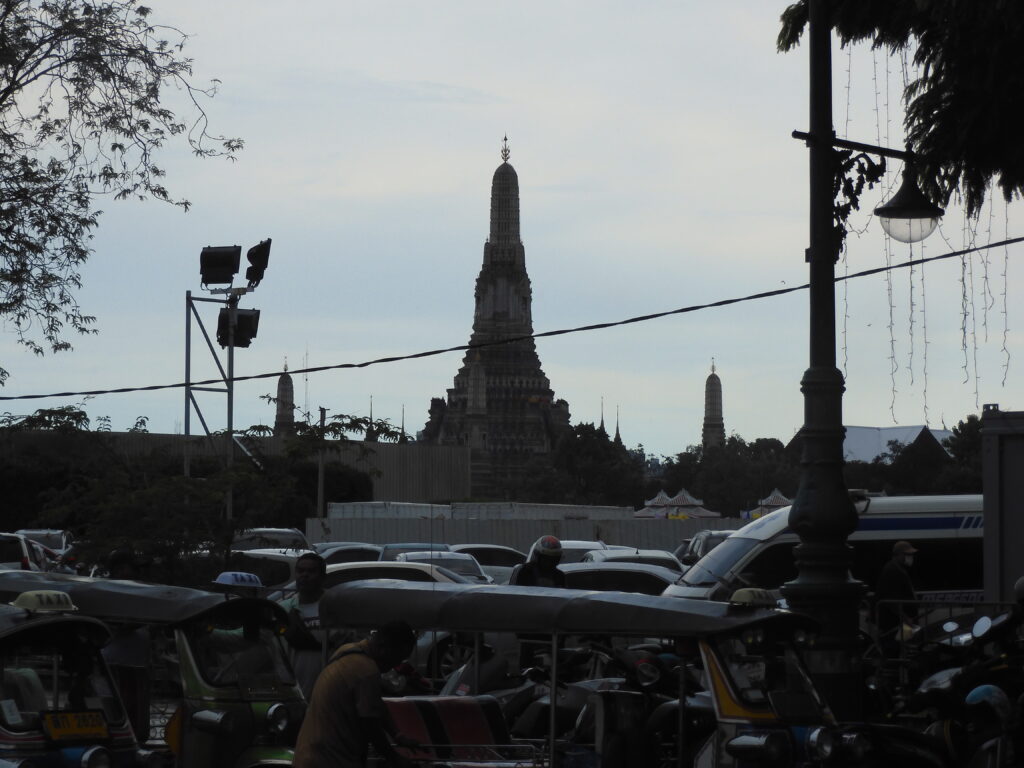
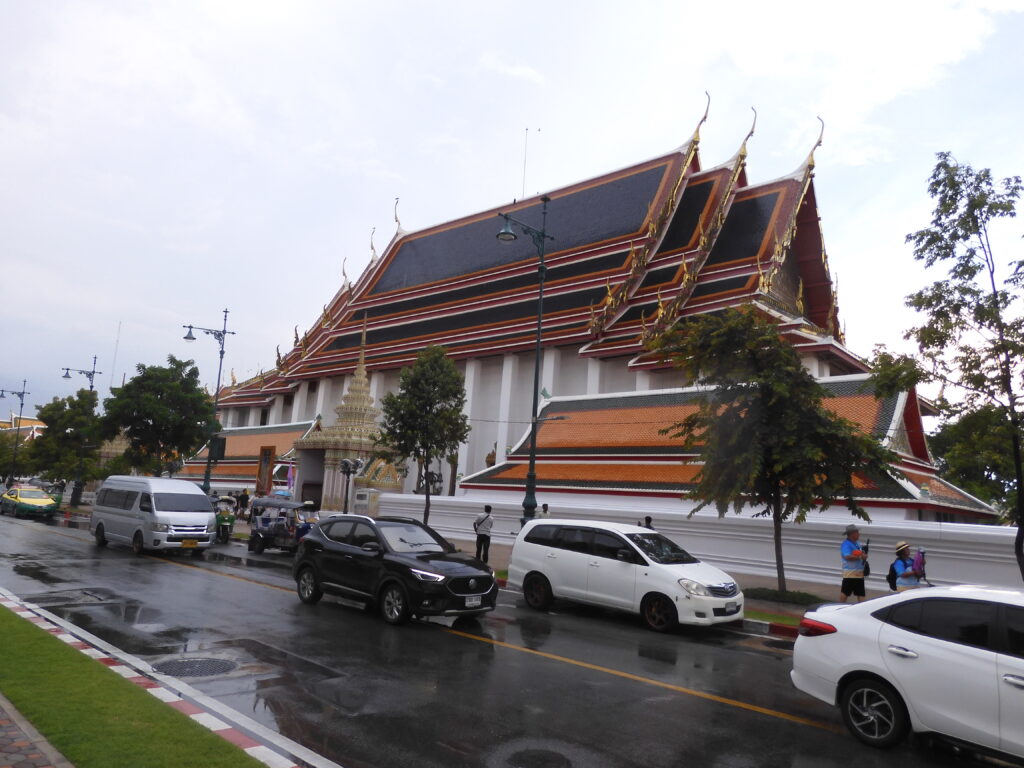
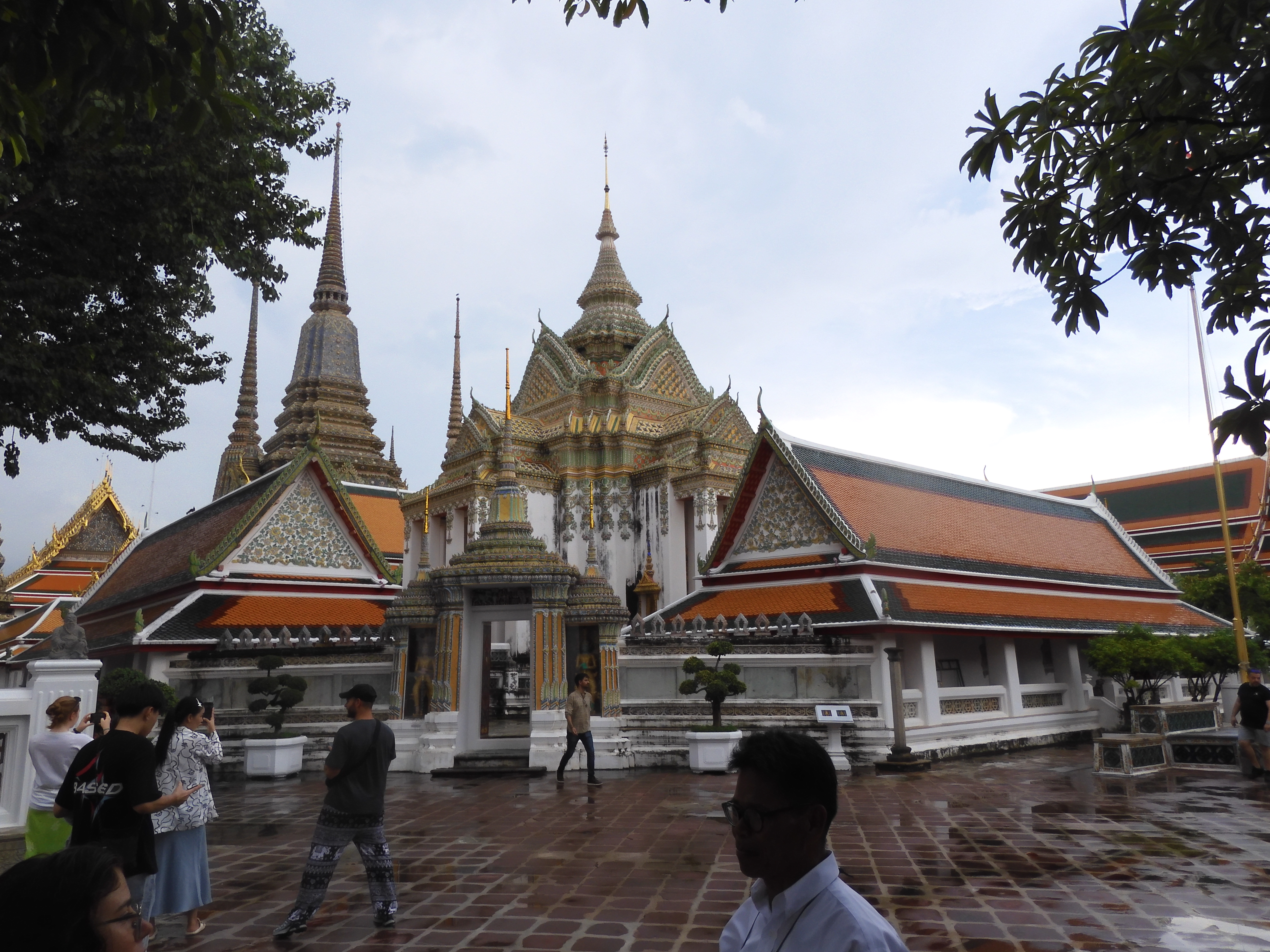


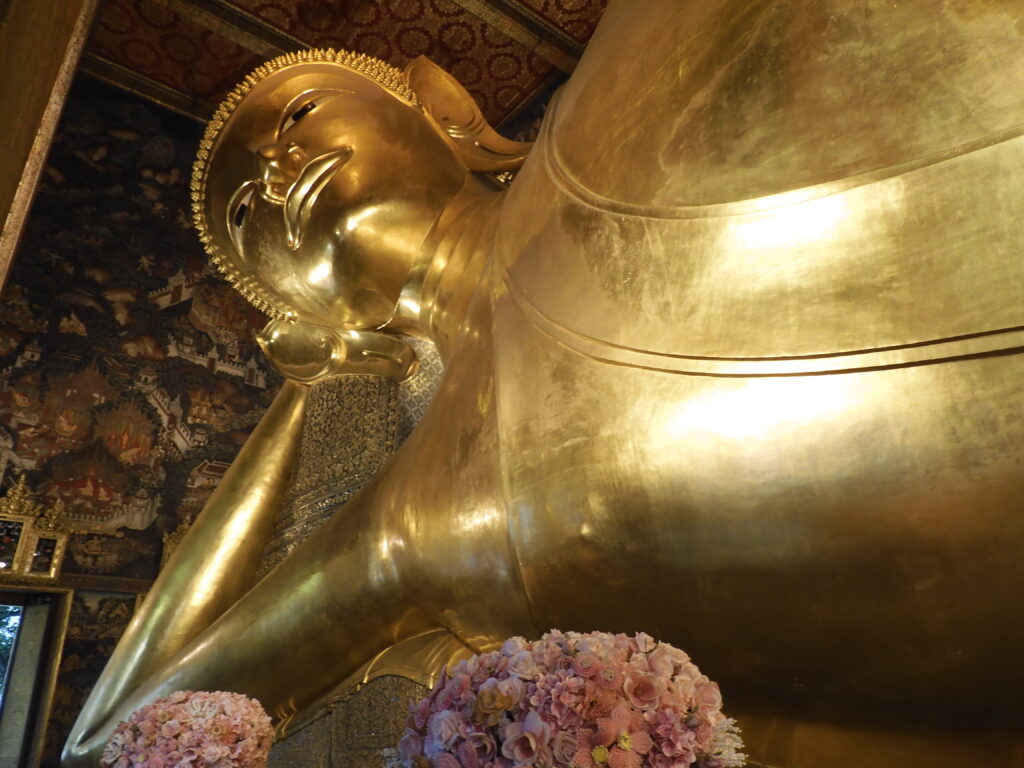
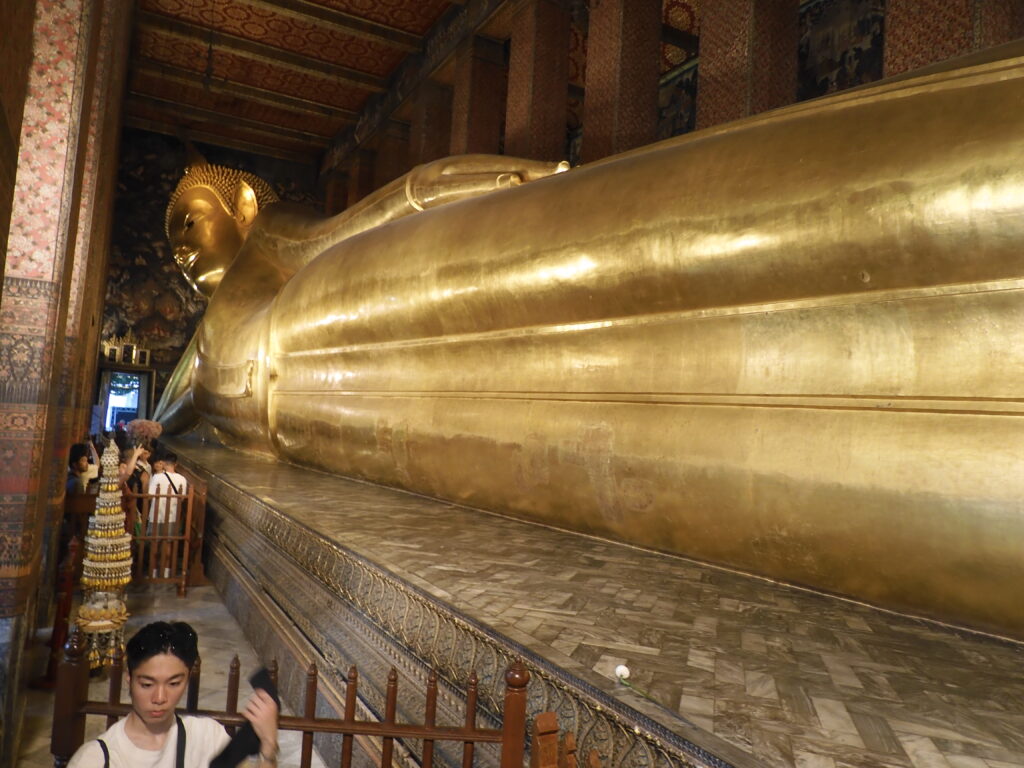

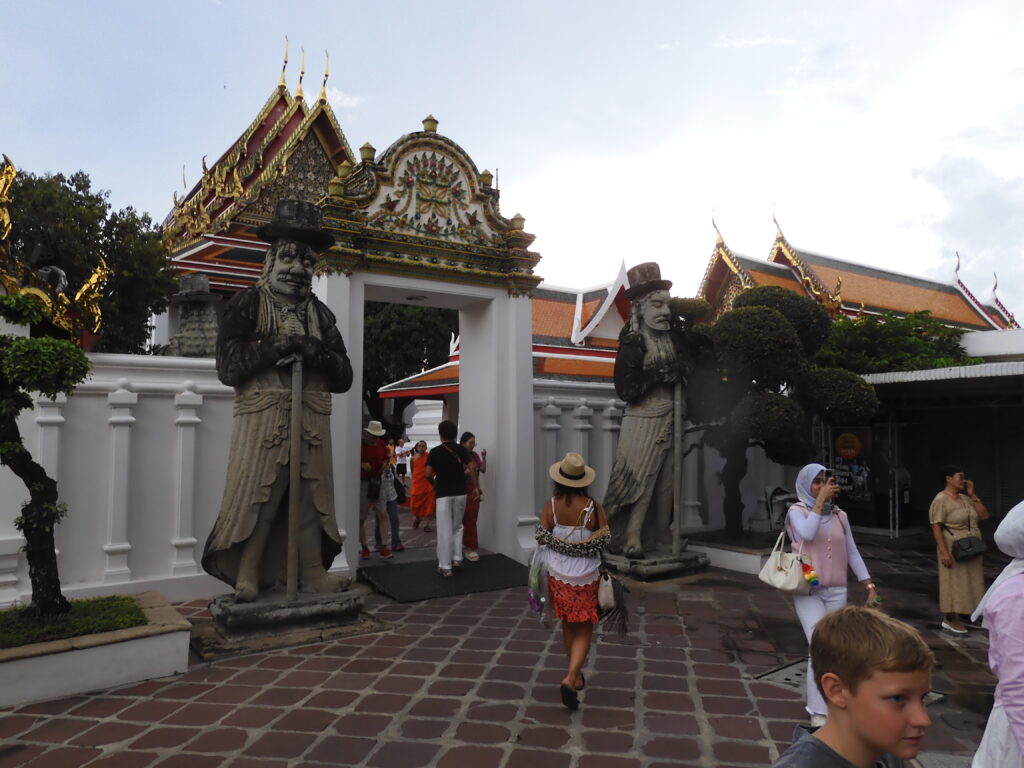
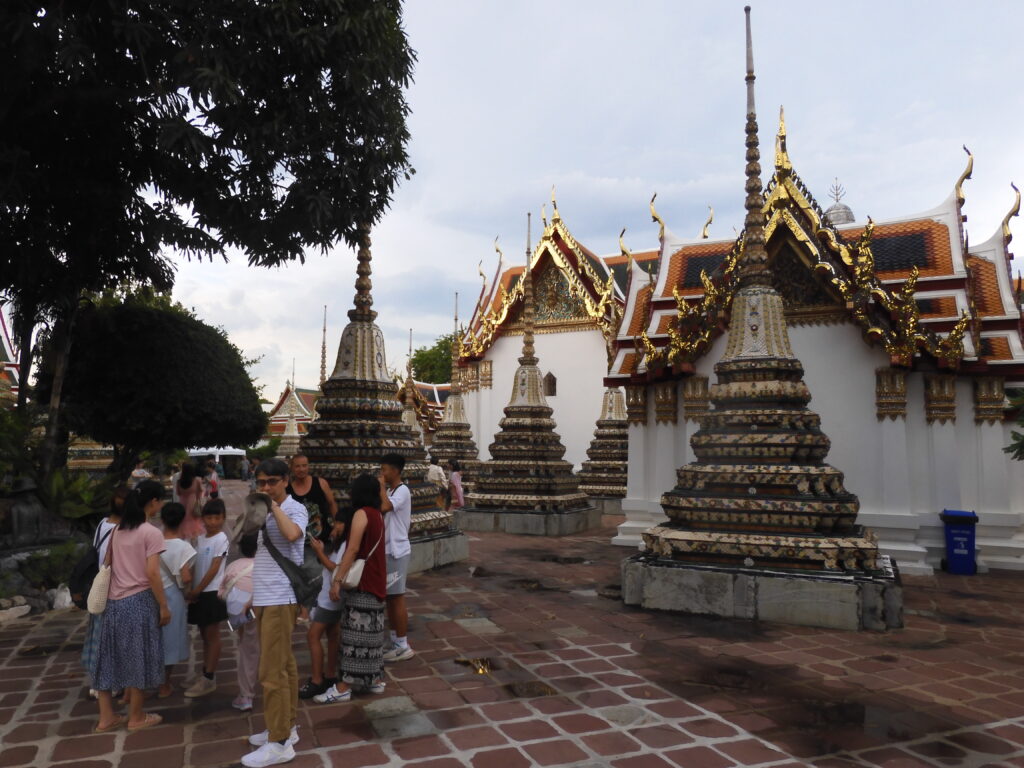

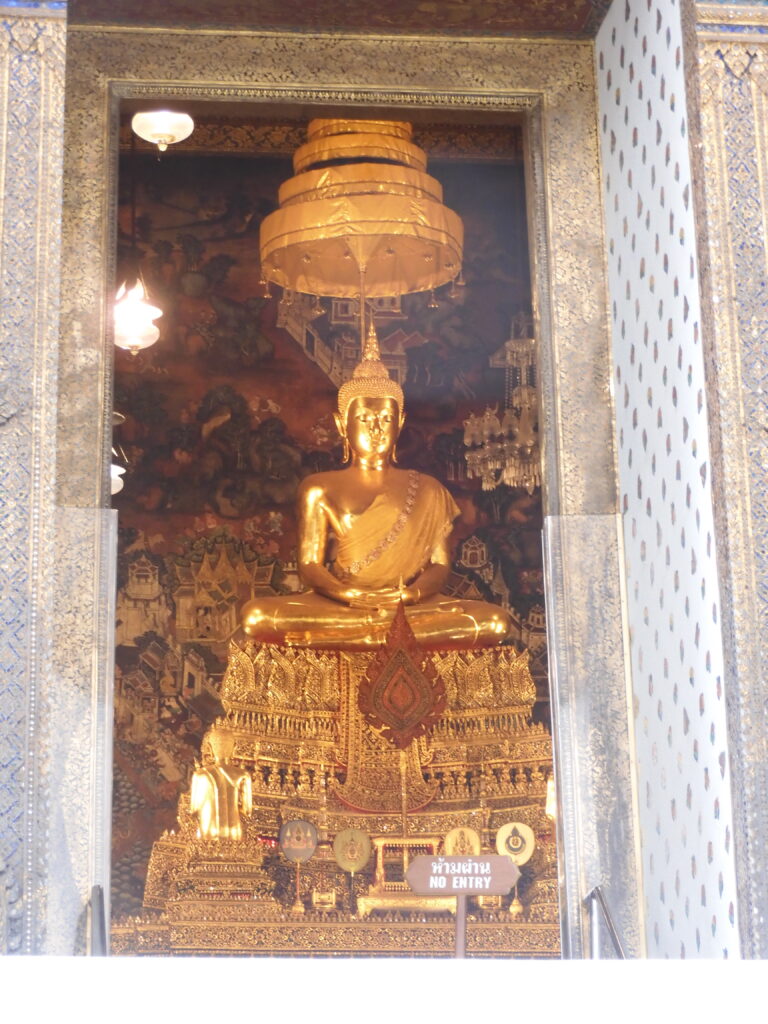
We had been asking Vun a few questions about his school, so he offered to give us a quick tour Sunday afternoon. Vun drove us out to Assumption University, which took about an hour. In English, of course, the symbol AU stands for gold. There are gold painted boulders here and there with the mark “AU.” It is a pretty campus, built in the Neo-classical style. I found it peculiar that while AU is a catholic school, there was a building that looked very much like a Buddhist shrine. It was not really a worship site, but rather a facility for discussion of current topics and an assembly point for students gathering for civic purposes. Perhaps this is how the Catholics justified it to their superiors.
We didn’t want Vun to have to backtrack all the way into Sukhumvit, so we just had him drop us off at the metro station closest to his school. We gladly cruised the public transportation back to Phrom Phong, and then to our room. Caleb got a long, good night’s sleep that night. I arranged bus tickets southward, and we prepared to leave Thailand. We had shelled out a pretty hefty sum by Asian standards for our room in Bangkok. I nabbed a pair of overnight bus tickets to Songkhla Monday afternoon. Songkhla is in the Southernmost part of Thailand. I thought we might save one night’s stay in a motel, explore Songkhla for a day and spend one night there before continuing on to the Cameron Highlands in Malaysia.
We got a surprisingly refreshing amount of sleep on the very comfortable, large, air conditioned bus. It was still a long drive, though, and we rumbled out of the bus into the sticky, muggy coastal air Tuesday morning. I did some research on the spot, trying to figure out where we could drop our bags, where we could stay, and when the minibus left for Hat Yai, which was the point from which the long distance buses south departed. It turned out that the Hat Yai buses left from the opposite side of town. After Caleb had walked through town looking for a motel, he decided he would rather just continue south that day. We did end up walking all the way through old town Songkhla with all of our gear. It was a quiet town, and we visited with some school children who were happy to see someone who was both “one of their own” and at the same time, a complete “farang.” We visited with them in their broken English as we hefted our packs toward the middle of town.
We got to Hat Yai in time to take an afternoon bus to Ipoh, Malaysia. By the time we got to Ipoh, we had been on three buses for most of Monday afternoon, all Monday night, and all day Tuesday. I can’t complain about those buses. They were very nice. They had better air conditioning and leg room than just about any other mode of transportation we had used on the entire trip. That said, a day and a half on buses is a very long time, no matter how good the bus is. I loved our stay in Thailand. I was kind of dragging my feet to leave. We ended up spending ten days there, the longest I had been in any one country since we left the United States on May 22nd. The combination of being back in a country that had a reasonable infrastructure, being around friends who absolutely bombarded us with hospitality, and the general beauty and history of the place we were visiting had pulled me in. I still mark Thailand as one of the places that most exceeded my expectations. Now, we were in Malaysia, the last “full sized” country we would visit on our trip. Singapore, after all, was the city from which we would fly back to the United States.
